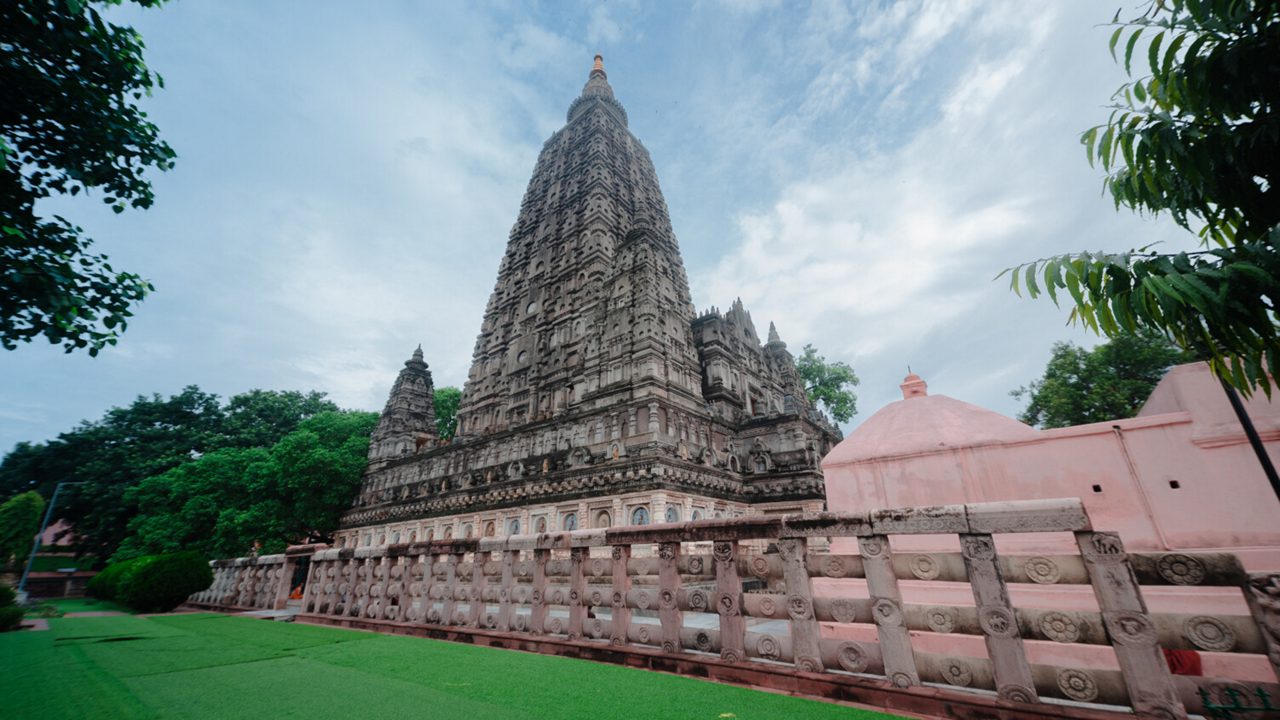THE CRADLE OF INDIAN CIVILIZATION
Bihar, a fascinating state of India, is named after the word “Vihara”, which means “monastery” or “a site lived by monks.” Earlier it was known as Magadh.
In the past, Bihar has long been the center of learning and culture in India. The first kingdom of India, the Mauryan Empire and one of the most notable religions in the world, Buddhism arose from the district that today forms Bihar. The Magadha kingdoms, under the Maurya and Gupta dynasties, united large swaths of South Asia under central rule. The capital city: Patna, formerly known as Patliputra, was a crucial political, military and monetary center of Indian civilization during the historical period. It is here that the fragment of the world’s largest university, Nalanda, has fallen asleep in the void of time.
Located in the east of India, Bihar lies between West Bengal to the east and Uttar Pradesh to the west. In addition, along with Nepal to the north and Jharkhand to the south, Bihar’s climate is influenced by the lesser Himalayas that start in the foothills of Nepal. The slopes or mountainous areas of Bihar, mainly the Rajgir slopes, are well known for their connection between Buddhism and Jainism.
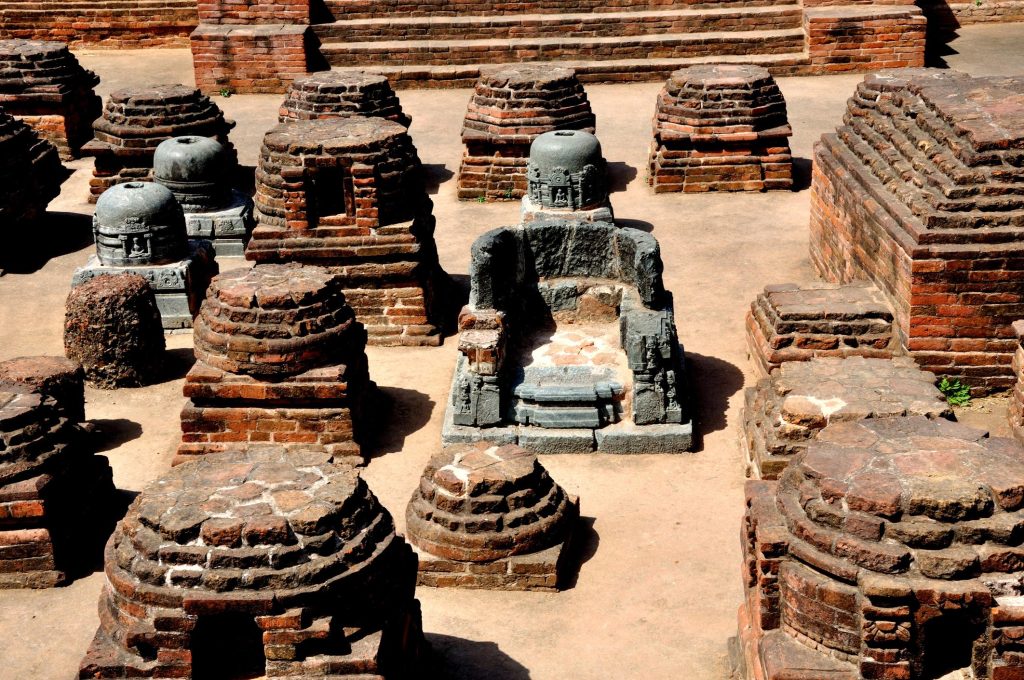
The Ganges, which flows from west to east, divides the Bihar plain into two unequal segments. Because of the Ganges and its tributaries, Bihar’s soil is essentially fertile. The Gangetic plain is enormous, and it is one of the most densely populated areas in the country. Bihar’s climate is often warm, nevertheless, the months of October, November, February, and March are the best for visitors..
The early history of Bihar
Bihar is linked to several of Sanatana (Eternal) Dharma’s or Hinduism’s old myths and stories. The region has a reputation for producing a diverse range of religions. At the present-day Bodh Gaya, a town in central Bihar, Prince Gautam attained enlightenment and turned into Buddha, gave rise to Buddhism. The territory is densely packed with Stupa (religious community). Lord Mahavira, the founder of the Jain religion, was also born here and attained nirvana. The site is currently the town of Pawapuri, a few kilometres south of Patna.
Guru Gobind Singh Ji, the tenth Guru of the Sikh religion, was born here and grew up to be a virtuous Sikh saint. To commemorate the Guru’s memory, a huge Gurdwara (Sikh temple) – Takhat Sri Harmandir Ji Sahib, popularly known as Patna Sahib – was built in eastern Patna. For Sikhs, the Gurdwara is one of the five holiest places of devotion (Takhat).
During the 7th and 8th centuries B.C., the Magadh and Licchavi kingdoms flourished. The rulers of the time put in place a structure that is not only a forerunner of current statecraft but also the link between statecraft and financial elements. Kautilya (also known as Chanakya) was a Magadh King Chandragupta Maurya’s advisor and the author of Arthashastra, the first treatise on modern economics.
In roughly 270 B.C., the legendary Mauryan ruler Ashoka was the first to establish firm credence for the effectual administration of people. The doctrines were carved into stone and placed across the realm. The statue of at least one lion seated over a platform with indications of wheels was assigned to the column. The lion represented power, while the wheel denoted the eternal essence of truth, and gave rise to the name Dharma Chakra. The official symbol of the independent Republic of India was established in 1947 as a figure of lions on a platform with the engravings of a wheel. The Indian national flag also features the Dharma chakra. Relics of these pillars can still be seen at Lauriya-Nandan Garh in West Champaran’s district and at Lauriya-Nandan Garh in the district of West Champaran.
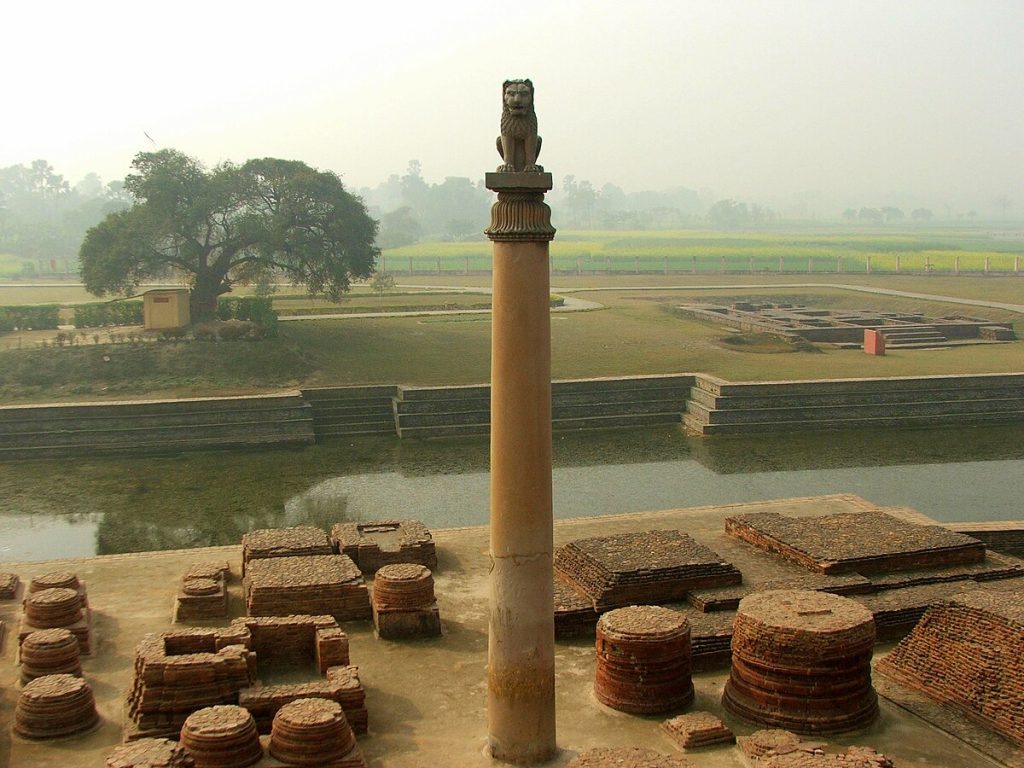
Nalanda (5th century) and Vikramshila (8th century) are two notable learning centres in Bihar. They are regarded as the world’s oldest international and secular colleges, where students from all over the world have acquired knowledge and intelligence.
Gaya is revered by Hindu pilgrims as the most sacred site for offering prayers to ancestors. The magnificent Indian sagas, Ramayana and Mahabharata still have countless remarkable tales related to various locations in Bihar. Valmiki, the creator of the Ramayana, was also a Bihar native. Sufism also grew in Bihar.
Patna to start with
To start your tourism journey, you may land in Patna, the capital of Bihar which is well connected by the air route. The city has regular train service to and from India’s major cities. The city also has the Loknayak Jayaprakash Airport, which has international and domestic flights. Many north Indian cities have road transit. The months of October through February are ideal for visiting Patna. In Patna, there are a variety of luxury and inexpensive hotels with all amenities. Tourists stopping over Patna must visit local bazars to feel traditional weaves like the locally-made sarees and Madhubani paintings which are available at Patna Haat, Upendra Maharathi Silk Sansthan, Patliputra Industrial Area, Patna Market and Hathwa Market. Travellers must relish Litti-Chokha, the local delicacies. It is one of the oldest riverine cities. Bihar’s roots can be traced all the way back to the Vedic period. Several of them have been recorded in Buddhist and Jain literatures as far back as 1000 BC. Magadh began here, and it is the most well-known of all. Bihar, to the south of the Ganges, was the kingdom’s heartland. Rajagriha (modern-day Rajgir) was the first capital, followed by Patliputra (now Patna). With the conquests of Licchavi and Anga, Magadh thrived and gained control of most of Bihar and Bengal, as well as most of eastern Uttar Pradesh and Odisha.
During the Mauryan era, Bihar grew in size. Chandragupta Maurya and his son Bindusara ruled over a vast empire that spanned from Bengal to Afghanistan. The Ganges was the central river roadway connecting Delhi and Bengal, and was navigable all year. Mauryan warships travelled as far as Sri Lanka and Java along the banks of the Patliputra (Patna) and Champa (near Bhagalpur). Emperor Ashoka (Chandragupta’s grandson) was one of India’s most distinguished monarchs, reigning from 273 to 232 B.C. Maritime trade along the Ganges reached its pinnacle with his conquest of Kalinga.
Patliputra, or modern-day Patna, holds a prominent place in Hindu history. It is thought to be linked to Goddess Patan Devi. Megasthenes, a Greek historian, and Fa-Hien, a Chinese language adventurer, both wrote lively tales of the town in their travelogues. Almost every dynasty in north India, including the Mughals, Sikhs, and Bengali Nawabs, fought for control of this region. The Battle of Buxar in 1764 established a foothold for the East India Company right here, paving the way for British domination over the Northern Provinces.
Bihar was administered by Viceroys during British rule, and this is reflected in Patna’s major buildings. Furthermore, Patna’s architecture, like that of any other north Indian state in India, exhibits the several kinds of rulers. Patna was the capital of the provinces of Odisha and Bihar when the Bengal Presidency was partitioned in 1912, and Bihar got statehood in 1936, with Patna as its capital city.
The New Bihar Museum, the Khuda Baksh Oriental Library, Golghar, Patna Cemetery, Padri-KiHaveli (a church), Takhat Sri Harmandir Sahib, Agam Kuan, Buddha Smriti Park, Maner Sharif, Gurdwara Pahila Bari aka Gurdwara Gae Ghat, Gurdwara Bal Lila Maini Sangat, Gurdwara Guru Ka Bagh, Kamald (Phulwari Sharif) are the major tourist attractions of Patna. Dargah Sharif, Mithan Ghat (Patna City), Sadaquat Ashram, Martyr’s Memoria, and a number of other structures may be found in Khankah Emadia (Mangal Talab, Patna City). Nearby cities include Gaya, Rajgir, Bodh Gaya, and Nalanda, which is home to one of the world’s oldest universities.
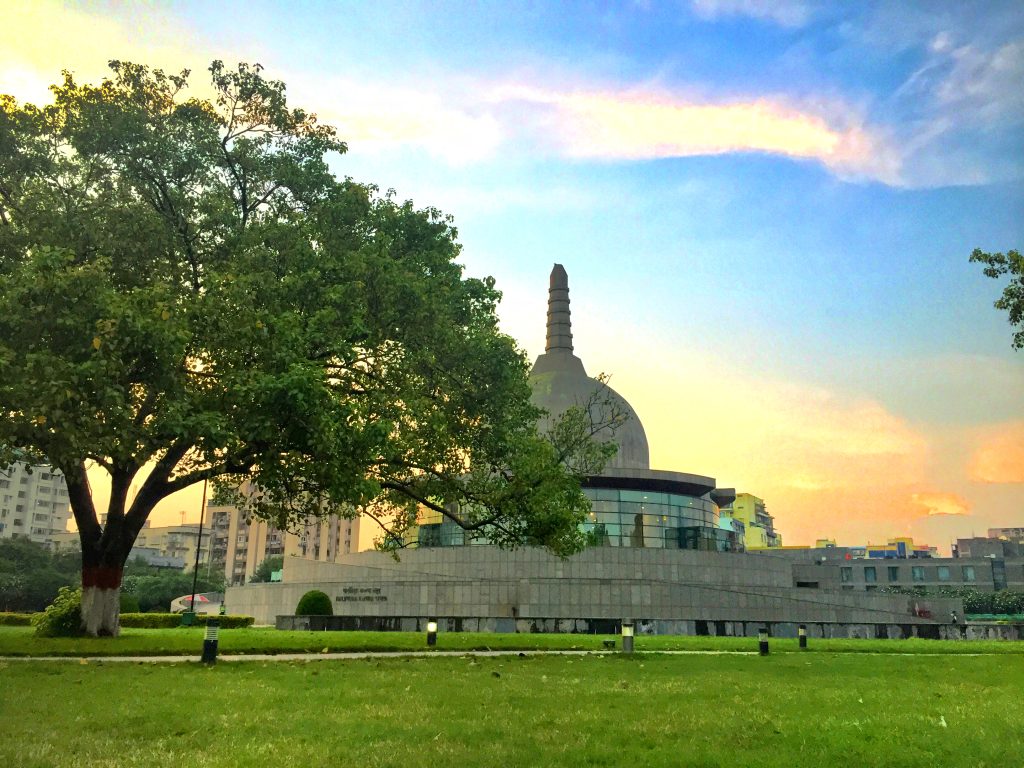
Buddha Smriti Park, Patna. This park was erected to commemorate the 2554 Buddha’s birth anniversary. The Patliputra Karuna Stupa, which stands 200 feet tall in the heart of the park and was opened by the 14th Dalai Lama, is the charm of this park. The Dalai Lama is the spiritual leader of Tibet. Every evening, a laser show depicts Bihar’s history from the time of the Ramayana to the post-independence period.
Heritage Tour
The state has a number of beautiful heritage sites that speak volumes about its illustrious past. Some of the heritage sites here date back to the Ramayana and Mahabharata periods.
Agam Kuan
Agam Kuan, Patna: The bottomless well, Agam Kuan, is an ancient Mauryan artifact of the Mauryan Emperor Ashok. This famous Ashokan relic, the Agam Kuan, is located a short distance from Ashoka’s Charitable Hospital in the Kumrahar complex and is thought to be a section of Ashoka’s famed hall.
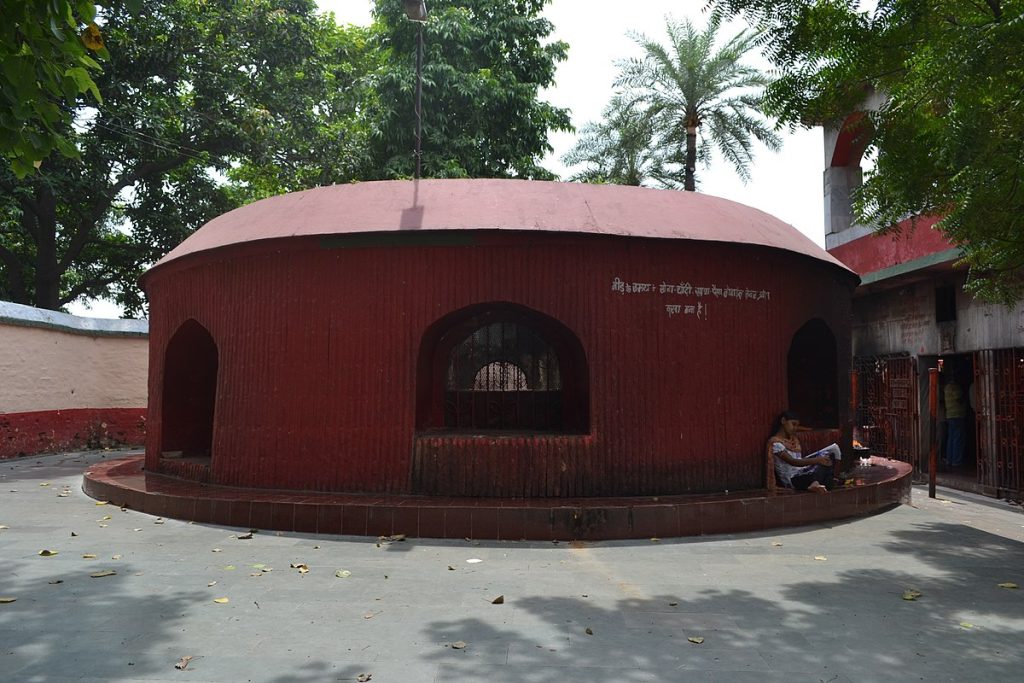
Gol Ghar
Gol Ghar: It is a magnificent architecture in Patna. A flight of steps spirals around this 29m high building to the summit, where one may obtain a wonderful view of river Ganga and Patna city. It was built in 1786.
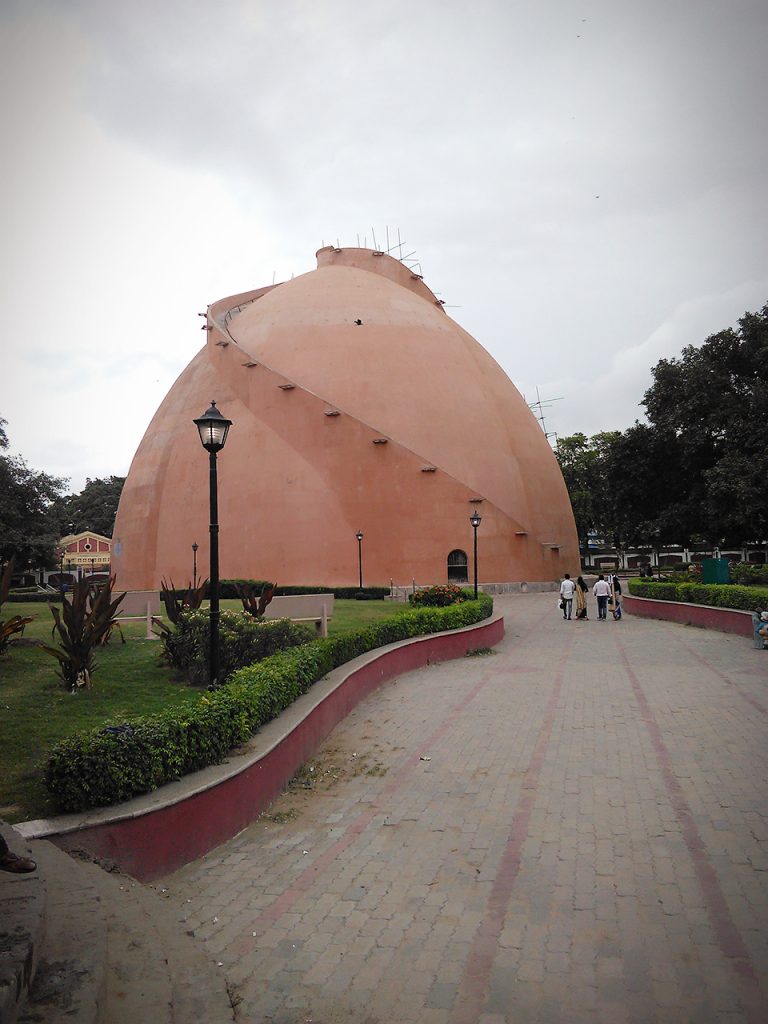
Click here
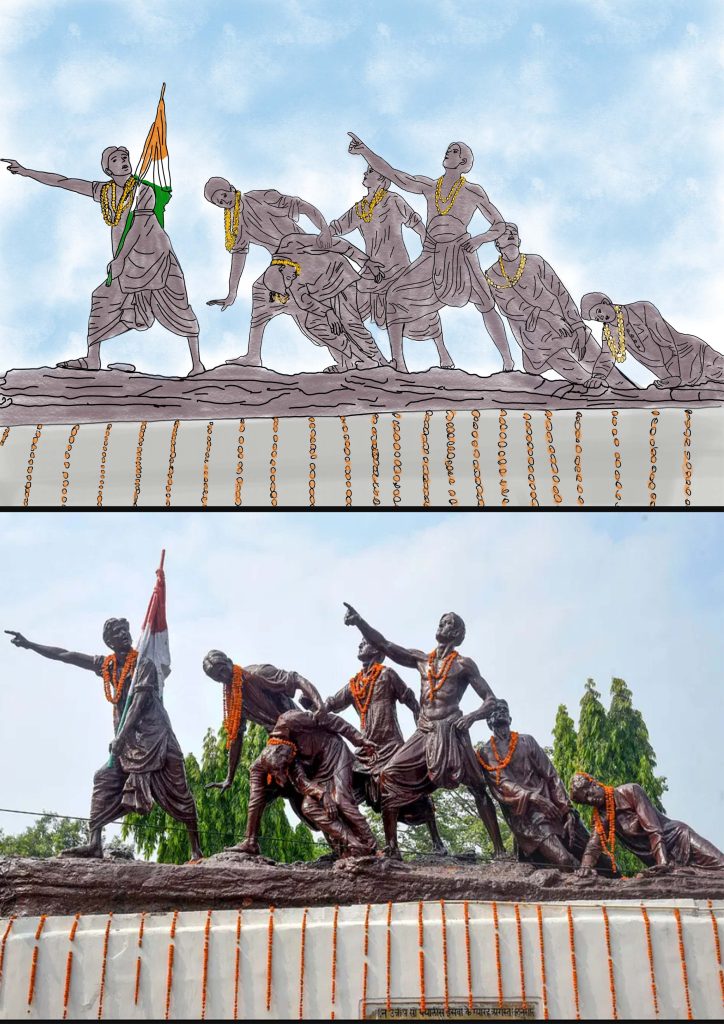
Martyr’s Memorial: It is life-size statue of the seven martyrs who were shot in their attempts to hoist the national flag during the Quit India Movement installed in front of the secretariat building in Patna.
Tomb of Shershah, Sasaram: Emperor Sher Shah Suri, a Pathan from this part of Bihar, fought the Mughal Emperor Humayun and ruled for 5 years till his death, is commemorated with a tomb in Sasaram town. His tomb is a prime example of Indo-Islamic design.
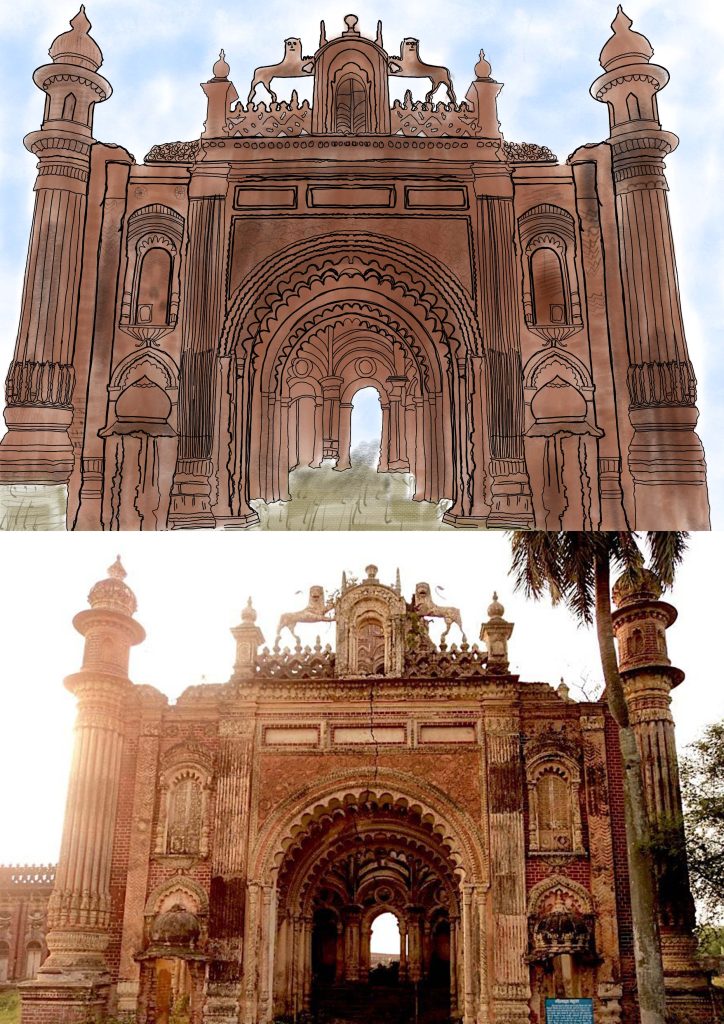
Navlakha Palace, Rajnagar: Maharaja Rameshwar Singh of Darbhanga built the palace in the 17th century A.D.
Jarasandh ka Akhara, Rajgir: The sought-after location that witnessed some of ancient India’s most important and spectacular wars. This epic combat was fought here between Bhima, the strongest of the Pandavas, and Jarasandh, a devout follower of Lord Shiva..
Buxor Fort: Buxar Fort is renowned for its architectural splendor and is regarded as the city’s most valuable property. Tourists have a great time looking at the fort’s relics and carvings.
Munger Fort: This is one of Munger’s most important monuments, built atop a rocky outcropping. The fort was built during the early Islamic monarchs’ reign.
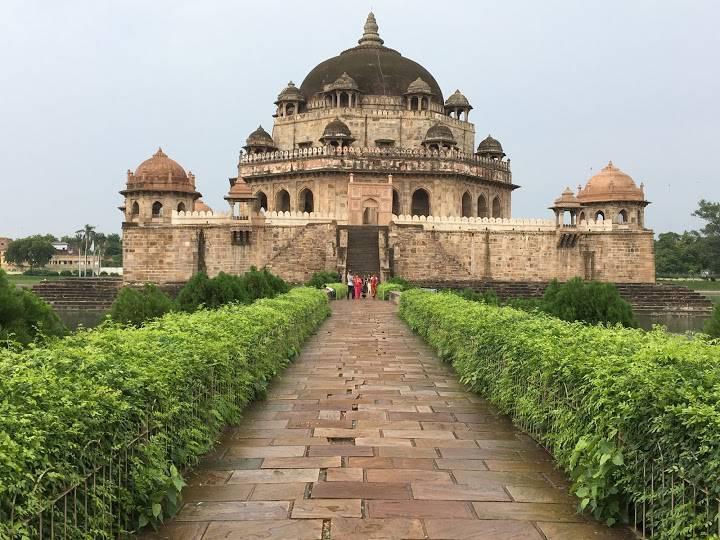
Rohtasgarh Fort, Sasaram: Rohtasgarh Fort, located 39 kilometers from Sasaram, is one of India’s most important and powerful hill forts. Sher Shah Suri, Shah Jahan, Maan Singh, Mir Qasim, and others used this fort as a safe haven for treasurers and their families.
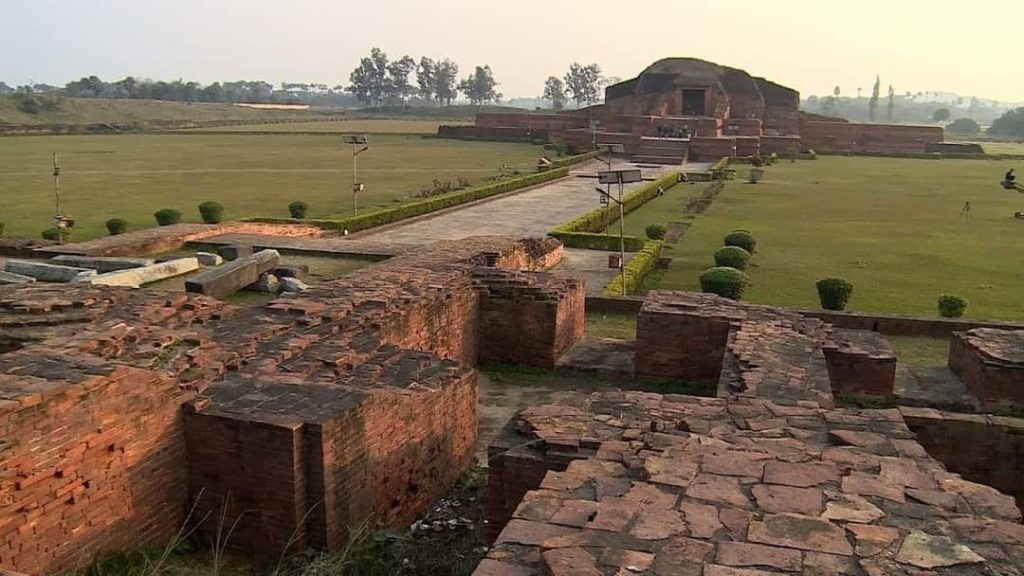
Vikaramshila University, Bhagalpur: Vikramshila, located 252 kilometers from Patna in the Bhagalpur district, is home to the old Vikramshila University. King Dharmapala created the university in the late eighth century AD. It was plundered by barbarians about 1200 AD after years of prosperity.
Eco Tour
Kakolat, Nawada: It is a waterfall located in Gobindpur, approximately 21 kilometers from Nawada. There is a deep natural reservoir just below the fall. From ground level, the drop is approximately 150 to 160 feet. Because of the surrounding green forest area, the image is panoramic and highly pleasing to the eyes. According to folklore, in the Treta Yuga, a king was cursed by a rishi and forced to live here as a python. During their exile, the mighty Pandavas visited the spot, and the cursed monarch was saved from the curse’s negative consequences. After the curse was lifted, the king declared that anyone who bathed in the waterfall would not get the snake’s yoni, which is why a huge number of people from far and wide bathe in the river. On the occasion of Bishua or Chait Sankranti, a large fair is organized.
Bhimbandh, Munger: It is 56 kilometers from Munger, 20 kilometers from Jamui Railway Station, and 200 kilometers from Patna Airport. Bhimbandh Wild Life Sanctuary is located in Munger District’s south west corner. On the hills and undulating tract of the Kharagpur Hills, the forests span an area of 681.99 sq km. These forests have a diverse vegetation, with Sal, Semal, and other trees growing side by side on the hilly terrains, shielding the forms and modest creepers below from the sun’s beams. These forests are home to a variety of exotic species including tigers, leopards, sloth bears, nilgais, sambhars, barking deer, wild bears, and four-horned antelopes. Several hot springs can be found in the valleys and slopes, the best of which can be found in Bhimbandh, Sita Kund, and Rishi Kund.
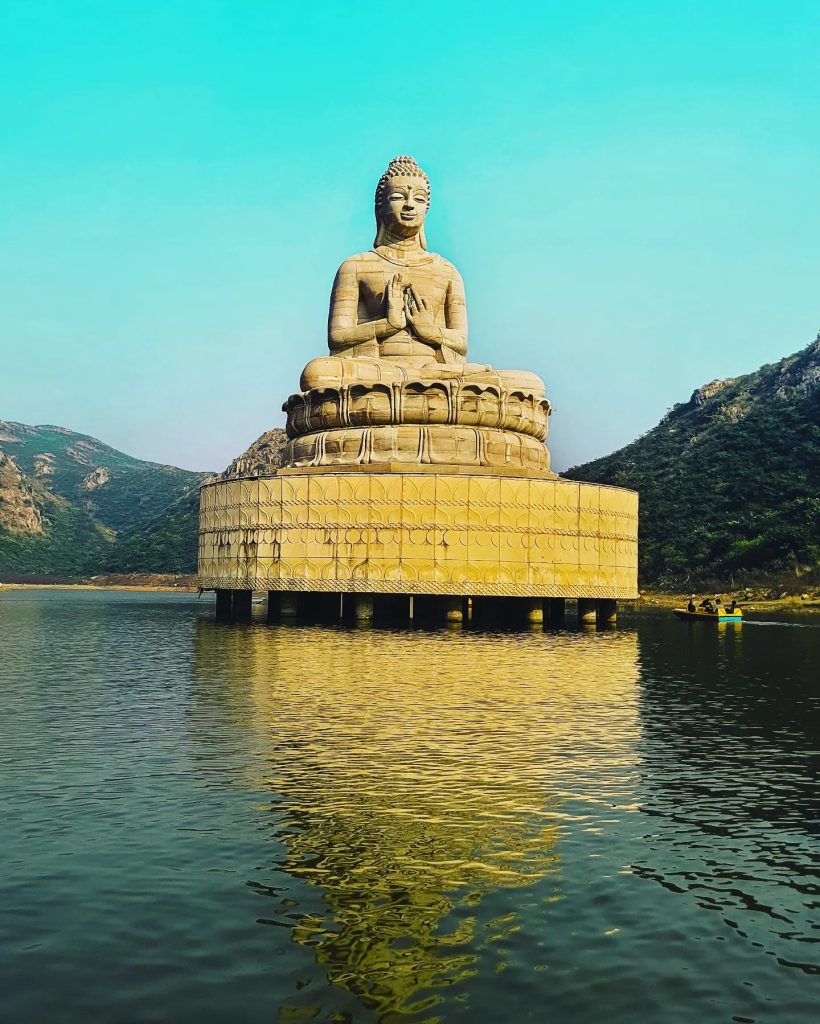
Ghoda Katora: It is being developed as an eco-tourism destination, complete with a massive Buddha statue surrounded by his four most significant followers, Ananda, Maha Kassapa, Maha Moggallana, and Sariputta. The intention is to pay homage to the Buddha and his disciples, who are part of Bihar’s cultural heritage. The Buddha spent a significant portion of his life in and around Rajgriha. Magadha was the home of Buddha’s students Sariputta, Maha Moggallana, and Maha Kassapa, whose services to the Buddha, the Dhamma, and the Sangha are widely chronicled.
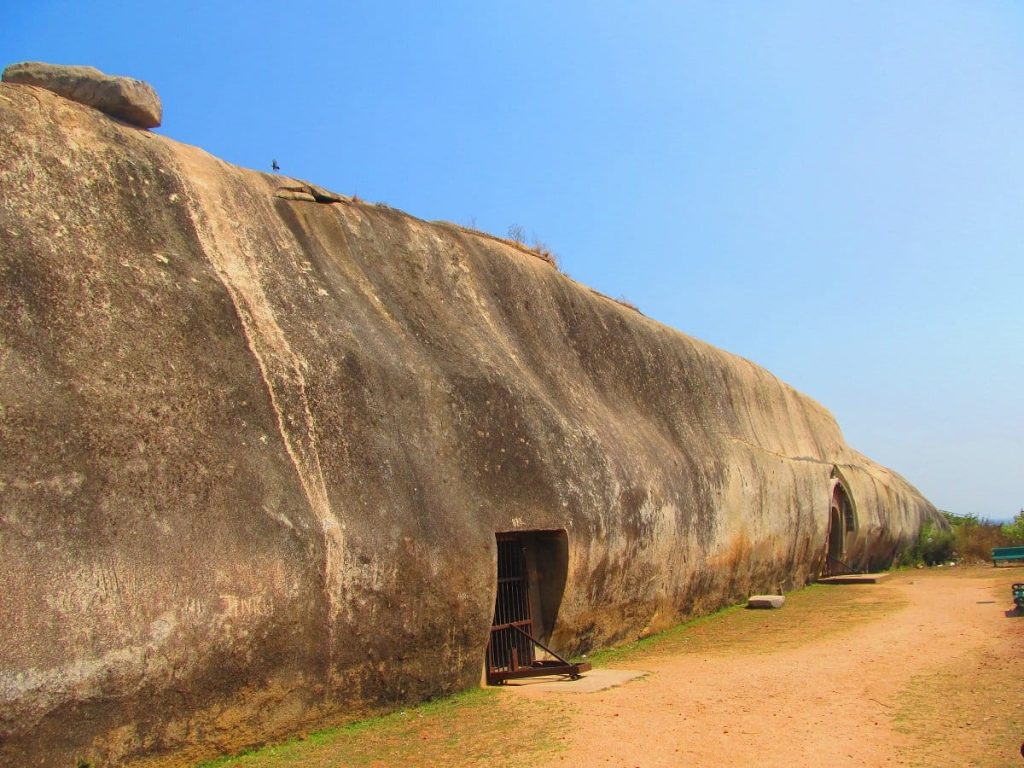
Barabar Caves, Gaya: Barabar Caves, located in the Barabar Hills, have a great architectural beauty. These caves are located approximately 25 kilometers from Gaya. These caverns were cut in the second century BC, during the early stages of Buddhism’s growth. These rock caverns are deep and neatly cut on the inside, with a fine shiny and gleaming surface. According to Buddhist literature, these caverns were built for Ajivika Buddhists. Nagarjuna Caves is one of three types of caves found in the Barabar region. Hut Caves and Pandavas Caves are the other two. Sudama and Chaupar are two of the Nagarjuna caves located on Nagarjuna Hill. These caverns were intended for ascetic spiritual Buddhist monks seeking truth and seeking isolation and seclusion.
Valmiki Nagar Tiger Reserve: The Valmiki Wildlife Sanctuary, which covers around 880 square kilometers, is a safe haven for tigers, one of the world’s most endangered species. The Shivalik range is located at the cradle of the Himalayan outermost Himalayan range. The terrain of the region is quite undulating, with sharp rises and deep slopes surrounded by lush green forests. Leopards and Tigers, as well as Fishing Cats, Chitals, Sambars, Black Bucks, Langurs, Sloth Bears, and Gaurs, make the forest an exciting tourist destination. Sal, Asan, Karama, Semal, Cane, and other thick forests provide a healthy climate in the area.
Gangetic Dolphins Sanctuary, Bhagalpur: The sanctuary is a 50-kilometer length of the Ganga-river in the Bhagalpur district. It is Asia’s only protected region for the critically endangered Gangetic Dolphins.
Bhuddha Tour
Bihar is the place where Buddha began his quest for a cure for suffering and eventually attained enlightenment. Buddhist visitors from all over the world come to see the beautiful Mahabodhi temple and the famed Bodhi tree. It was here that Lord Buddha obtained enlightenment and founded the Buddhist religion, which is currently practiced by millions of people all over the world. The Buddhist Circuit follows the sacred footsteps of the Buddha, which have evolved into pilgrimages. Important Bhuddhist sites are as followed.
Vaishali: Vaishali is a well-known city with various Buddhist sites and the seat of the world’s first republic. Lord Buddha’s numerous visits to Vaishali, where he gave sermons and lectures, rendered Vaishali immortal. Ashoka Pillar, Buddha Stupa, Fort of King Vishal, and Shanti Stupa are the city’s principal attractions. Patna is about 55 kilometres away and is well-served by a lot of buses.
Nalanda: Nalanda was the world’s first residential university and the seat of learning thousands of years ago. This residential institution, at its peak, hosted over 10,000 students and over 2000 lecturers from all over the world. When Lord Buddha came to conduct sermons and speeches in Nalanda, it became even more famous. Apart from the ruins of Great Nalanda University, the Nalanda Archaeological Museum has some outstanding collections. The museum, which is located directly across from the university building, exhibits both Hindu and Buddhist bronze statues, some of which are in good condition. The two enormous ceramic jars from the first century are the museum’s major attraction. The Nava Nalanda Mahavihara is a Pali Literature and Buddhism research and study organization. Nalanda is about 90-kilometres from Patna.
Bodh Gaya: This is, without a doubt, India’s and possibly the world’s most important Buddhist pilgrimage site. It was here that Prince Siddhartha obtained enlightenment under a Bodhi Tree, transforming himself into Lord Buddha and founding the Buddhist religion. Thousands of pilgrims from all over the world pay visit to the Mahabodhi Temple, the Bodhi Tree, and other holy sites. Numerous stupas engraved with figures of Lord Buddha in various positions are strewn throughout Bodh Gaya. Many various countries’ monasteries and temples can be found here. The Thai Temple, which lies on the western side of Mahabodhi Temple, is the most beautiful and grand. Bodh Gaya is about 110-kilometres from Patna and has good road and rail connections.
Rajgir: Rajgir is only 10-kilometres from Nalanda. The Griddhkut Hill is a holy spot for Buddhists since it is where Lord Buddha used to offer discourses. Kundalpur, about 10-kilometres from Rajgir, is home to a well-known Jain temple and Pawapuri, the most important site for Jains, where Lord Mahavira obtained Nirvana and eternal salvation. The Ajatashatru Fort, Bimbisara’s Jail, Swarna Bhandar, the Peace Pagoda, and the Cyclopean Wall are the primary attractions in Rajgir. The Griddhkut hill is home to a peaceful pagoda. There is a path to the top of the hill, but an aerial chairlift is the best method to get there. The vistas of the Rajgir Hills are mesmerizing and spellbinding.
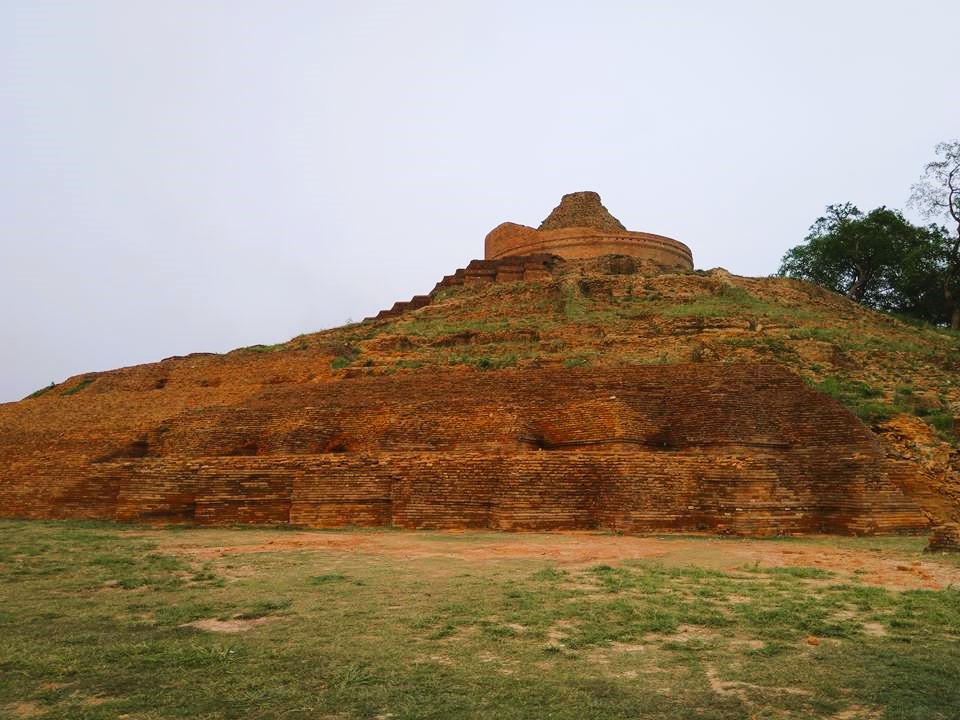
Kesaria, East Champaran: The remnants of a Buddhist Stupa can be found on a towering brick mound at Kesaria, which is topped by a solid brick tower of considerable size. The ruin has a base diameter of 68 feet and a height of 51/2 feet. It was formerly capped with a pinnacle that stood 80 to 90 feet above the ground. This monument, according to General Cunningham, dates from AD 200 to 700 and was built over the ruins of a much older and larger stupa. The Kesariya stupa is thought to have been built to commemorate the location where Lord Buddha spent the final days of his trip before achieving Nirvana. Lord Buddha is supposed to have given his begging bowl to the Lichhivis, or inhabitants of Vaishali, and asked them to return to Vaishali after he died. The Lichhivis are claimed to have built this stupa to commemorate Lord Buddha’s death. It began as a mud stupa and evolved into its current form during the Maurya, Sunga, and Kushana periods.
Lauria Nandangarh: In the Champaran area, Lauria Nandangarh is a rural community. A beautiful skeleton of a massive stupa can be found here. It is a 26-meter-high old block that is said to be the stupa where Lord Buddha’s remains are kept. The iconic pillar of King Ashoka may be found half a kilometer away from the village. The pillar is the only polished stone slab taller than 32 feet (10 m). The summit is bell-shaped, with a circular clone adorned with Brahmi birds and a lion’s image. The Ashoka decree is engraved on the pillar in obvious and wonderfully crude lettering.
Guru Tour
Shri Guru Gobind Singh Ji, the tenth Sikh Gurus was born in Patna on December 22, 1666. He is the author of Shri Guru Granth Sahib Ji (the sacred scripture of Sikhism). Shri Guru Gobind Singh Ji fostered a strong link among the Sikh community as a saint, soldier, poet, and revolutionary. His major contribution was to the ongoing formalization of the faith that Guru Nanak, the first Guru, had established as a religion in the 15th century. In 1699, Guru Gobind Singh Ji founded the Sikh Khalsa. The Gurdwara – Takhat Sri Harmandir Sahib in Patna, where Guru Gobind Singh Ji was born, is considered as one of the five Takhats by Sikhs.
Takhat Sri Harmandir Sahib, Patna: In 1839, Maharaja Ranjit Singh Ji, the first king of the Sikh Empire, began renovation of the great Guru’s sacred birthplace. Harmandir Takhat’s current beautiful architecture was renovated in 1954 after the earthquake of 1934 destroyed some of it. In the area of Takhat Sri Harmandir Ji, Patna Sahib, there are four more Gurdwaras to visit.
Gurudwara Pahila Bari Aka Gurudwara, Gae Ghat, Patna: It is dedicated to Guru Nanak Dev Ji, who stayed here during his journey to Patna in the early 1500s and is known as Gurdwara Gae Ghat.
Gurudwara Bal Lila Maini Sangat: This temple, which is close to Takhat Sri Harmandir Sahib Ji, is located in the former residence of Raja Faateh Chand Maim. His wife, known as the Rani, treated Gobind Rai as if he were her own son. The Rani had a Gurdwara built in her residence when Gobind Rai departed Patna.
Gurudwara Shri Guru Gobind Singh Ghat: This location, which is near to the Ganga’s bank, is also associated with Guru Gobind Singh ji’s childhood.
Grurdwara Guru ka Bagh: This Gurdwara recalls Guru Tegh Bahadur’s arrival in Patna. The Guru returned to Patna to rejoin his family after a four-year tour of Eastern India.
Gurudwara handi Sahib, Danapur: This Gurdwara was erected in Shri Guru Gobind Singh Ji’s honour. Mata Jasni, an elderly lady, prepared Khichdi in a handi for Guru Ji and presented it to Satguru Ji. As a result, this location is known as Handi Sahib.
Gurdwara Bari Sangat Shri Guru Teghbahadur Ji Chauki: Bari Sangat Gurdwara When Shri Guru Tegh Bahadur Ji Chauki Bhagalpur was visited by Guru Tegh Bahadur in 1667, it had two Sikh Sangats. Gurdwara Bari Sangat Shri Guru Tegh Bahadur Ji Chauki Sahib is the name of the location. Gurdwara Singh Sabha has an antique handwritten copy of Guru Granth Sahib that was acquired from the Shrine’s former Udasi priest.
Gurdwara Chacha Phaggu Mal, Sasaram: The Gurdwara Chacha Phaggu Mal is the town’s main Gurdwara, having a vast high-ceilinged hall and a mid-height gallery. Three replicas of the Guru Granth Sahib are seated side by side beneath a white marble domed rectangular pavilion.
Gurdwara Pakki Sangat: Gurdwara Monghyr Pakki Sangat – Monghyr, a district town 170 kilometres by train east of Patna Sahib, is another location where Guru Tegh Bahadur is said to have stayed during his eastward voyage. It was during his stay here that he learned of Guru Gobind Singh Ji’s birth.
Gurdwara Shri Guru Tegh Bahadur Ji, Gaya: Gaya is a historic Hindu pilgrimage on the banks of the Phalgu River, a tributary of the Ganges, where pilgrims flock to worship and ceremonies are held by local priests for the benefit of their ancestors.
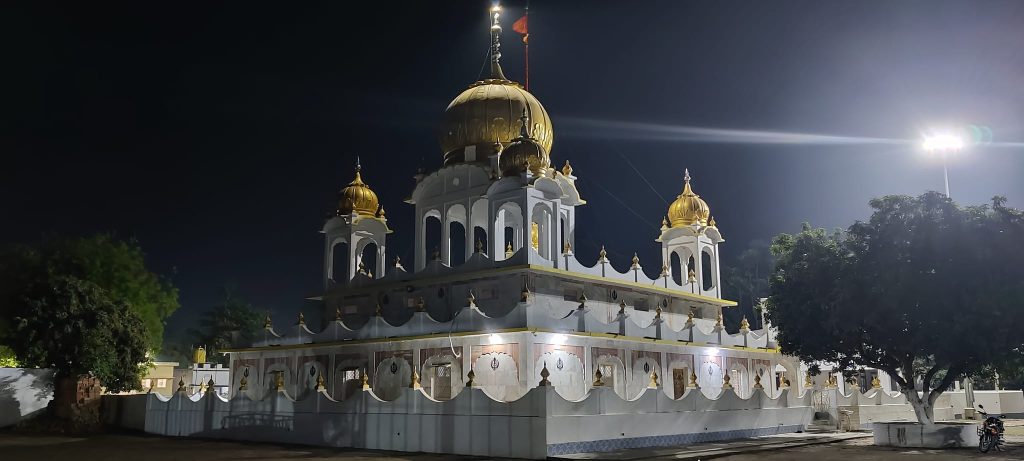
Shri Guru Teghbahadur Aitihasik Gurdwara, Katihar: This old Gurdwara is located in the Lakshmipur Panchayat of Katihar District’s Barari Block. The district headquarters is about 40 kilometers away. Many people come to this village because of Guru Tegh Bahadur Sahib’s connection to it. Also preserved is an antique book of the Guru Granth Sahib.
Ramayan Tour
The Ramayana is more than a story; it is a powerful allegory and an essential element of the Hindu religious canon. The state of Bihar is rich in stories from the epic Ramayana, penned by the sage Valmiki Muni. There are numerous locations associated with various events in Goddess Sita’s and Lord Rama’s lives. According to legend, the Mithila state once suffered from severe drought. King Janak began ploughing a field to impress Lord Indra for rain. When the ploughing approached Panaura, the plough collided with a sailboat. The vessel burst open, and Goddess Sita awoke. Sitamarhi is the name given to this location after that. Sita was adopted by King Janaka of Videha and his wife Sunaina.
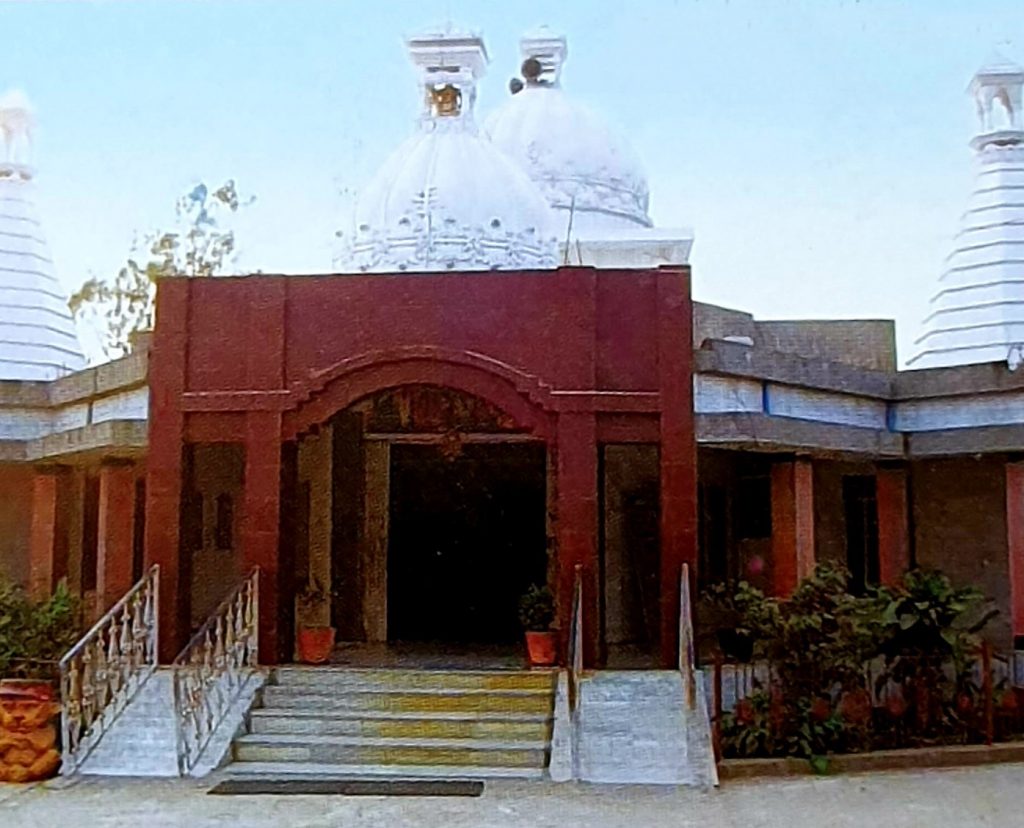
Janki Temple, Punauria: This shrine is located around 5 kilometers south of Sitamarhi. This temple is said to be the birthplace of Sita and is a revered site where pilgrims come to pay their respects.
Janki Temple, Sitamarhi: This Hindu temple, which dates back over a century and is located in Sitamarhi, is dedicated to the life of Goddess Sita. Goddess Sita is said to have been born in this temple.
Panth Pakar, Sitamarhi: About 8 kilometers north of Sitamarhi, an ancient banyan tree still survives. Sita is reported to have rested for a while under this banyan tree after leaving Janakpur in a palanquin for Ayodhya following her marriage to Shri Ram.
Haleshwar Sthan, Sitamarhi: This is an old Shiva temple located 3 kilometers north of Sitamarhi. According to legend, this temple was built by the King of Videha during the Putrayesthi Yagna.
Ahilya Sthan, Darbangha: The settlement is roughly 24 kilometers north of Darbhanga and 4 kilometers from Kamtaul Railway Station. It is famous for the Ahilya temple, which is linked to the legend of the sage Gautam and his wife Ahilya as told in the epics and Puranas. The principal object of worship inside the Shrine is a flat stone claimed to bear the foot prints of Sita, Ram’s wife.
Chanki Garh, West Champaran: This village, also known as Janaki Garh, is located around 9 kilometers east of Ram Nagar Railway Station. A big mound may be found in the village’s eastern section. It stands 90 feet tall and is made of solid masonry. It was most likely formerly a fort, as evidenced by the fortifications that can still be seen. According to local legend, it was King Janak’s fort.
Valmiki Nagar, West Champaran: A metal road connects this settlement on the Indo-Nepal border, 42 kilometers north of Bagaha. There is a Valmiki Ashram where Maharshi Valmiki is claimed to have resided. Every year on Makar Sankranti, a fair is conducted along the Gandak River. At Valmiki Nagar, there are also historic Nara Devi and Gauri Shankar temples, in addition to an antique Shiva temple built by the Bettiah Raj.
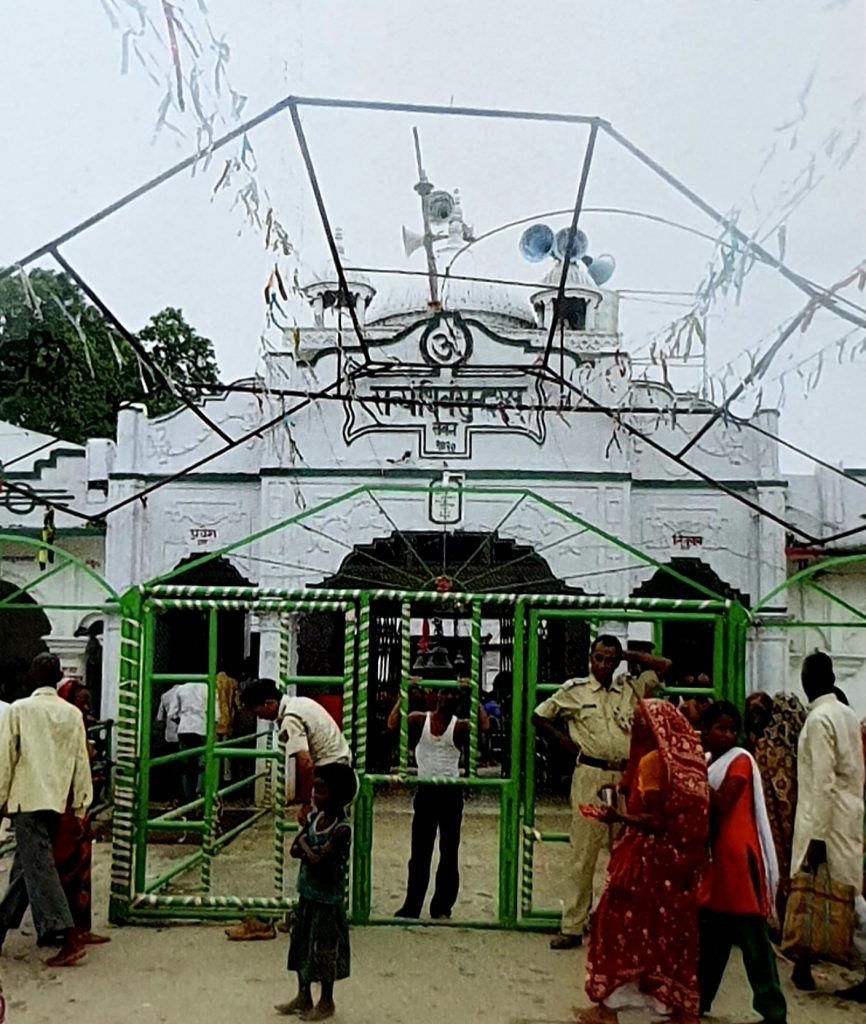
Singheshwar Sthan, Madhepura: From ancient times, Lord Shiva’s dwelling has been Singheshwar Sthan. Though there are other traditions regarding how the Singheshwar temple came to be, the most frequently acknowledged one involves Rishi Shringi. Singheshwar was once located on the banks of the Kosi River and was surrounded by a deep and lush green forest. It was the ideal location for ‘Tapasya’ (Meditation), and it was here that Vibhandak Rishi and his son Rishi Shringi spent their entire lives in intense meditation.
Phullahar, Madhubani: The village of Goddess Girija is located around 6 kilometers west of the block headquarters in Umgaon. Sita, Janak’s daughter, is supposed to have come here every day to worship the Goddess. At this location, Lord Rama beheld her for the first time.
Pretshila Hilla, Gaya: The 873-foot-high Pretshila Hills are located around 8 kilometers northwest of Gaya. The literal translation is ‘Hill of the Ghosts.’ A modest temple dedicated to Yam stands at the summit of the hill (The God of death).
Kako, Jehanabad: Lord Ramchandra’s stepmother, Rani Kaikeyi of Ayodhya, is said to have lived here for a period and the village was named after her. It is located 10 kilometers east of Jehanabad Railway station. A grave of Hazarat Bibi, Kamal Sahiba, a prominent Muslim lady saint, can also be found in the area. It is stated that this lady, who was the aunt of Bihar Sharif Haryat Makdum Saheb, held divine powers.
Rainchura, Vaishali: Every year on Ram Navami Day, a fair is conducted in Vaishali block. According to local legend, Lord Ram Chandra stopped here for a bath on his journey to Janakpur. His footprints are supposed to have left traces on the stone.
Ahirauli, Buxur: This village, about 5 kilometres north of Buxur, includes a Devi Ahilya shrine. Rishi Gautam cursed his wife and she turned into a stone, according to folklore. When Lord Ram’s feet landed on the stone, Ahilya came to life.
Rain Rekha Ghat, Buxur: Lord Ram Chandra and his younger brother Lakshman, along with their tutor Rishi Vishwamitra, crossed the Ganga here on their route to Janakpur, where Lord Ram took part in the Sita swayamvar (public ritual of Sita’s marriage), according to tradition.
Tar, Bhojpur: The settlement takes its name from Tarka, a female demon killed by Lord Rama, and is located around 10 kilometers north of Piro. In the settlement, there is an ancient tank that is claimed to be Tarka’s wrestling ground.
Giddheshwar, Jamui: Local mythology has it that on Ravan’s way back to Lanka after abducting Sita, the epic battle between the vulture Jatayu and Ravan took place here on the hill some 13 kilometers south of Jamui. On the occasions of Shivratri and Maghi Purnirna, there is a Shiva temple that attracts large crowds.
Sita Kund, Munger: The Sita Kund hot spring is located in a village about 6 kilometers east of Munger town. Lord Rama, after rescuing his wife Sita from the demon king Ravan, questioned her chastity, and Sita volunteered to enter a raging fire to prove her chastity. She emerged from the fire unharmed, and the heat she had absorbed from the fire was dispersed in the pool in which she bathed. The hot spring is now encased in a brick reservoir and is frequented by pilgrims, particularly during the Magh full moon.
Sufi Tour
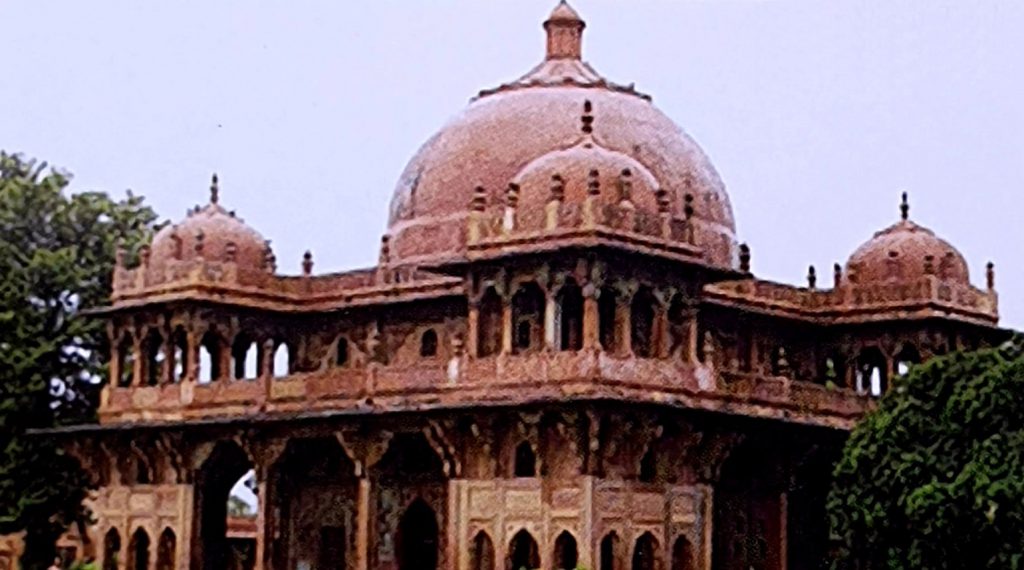
Maner Sharif, Patna: It is a major village with ancient antiquities located in the Danapur Sub-division, some 32 kilometers west of Patna on the Patna-Arrah Highway. Maner was a center of study in the early Middle Ages, and it is reported that grammarian Panini, as well as Bararuchi, resided and studied here. Shah Daulat or Makhdum Daulat’s tomb, known as the Chhoti Dargah, and Sheikh Yahia Maneri’s or Makhdum Yahia’s tomb, known as the Bari Dargah, are both located in Maner. Makhdum Daulat died in Maner in 1608, and his mausoleum was finished in 1616 by Ibrahim Khan, Governor of Bihar and one of the saint’s students. The structure is extraordinarily beautiful, with delicate and high-quality carvings on the walls. It is crowned by a large dome, and the ceiling is decorated with carved Quranic inscriptions. It is by far the best Mughal monument in Eastern India, with every detail reminiscent of the architecture of Jehangir’s time. A mosque, also erected by Ibrahim Khan in 1619, is located within the compound, while a beautiful gateway, having an older inscription matching to 1603-01, provides entrance to the north. Yahia Maneri’s tomb is surrounded by mosque walls and ghats, with pillared porticos protruding out into it, and is connected to the historic River Sone bed by a 400-foot tunnel.
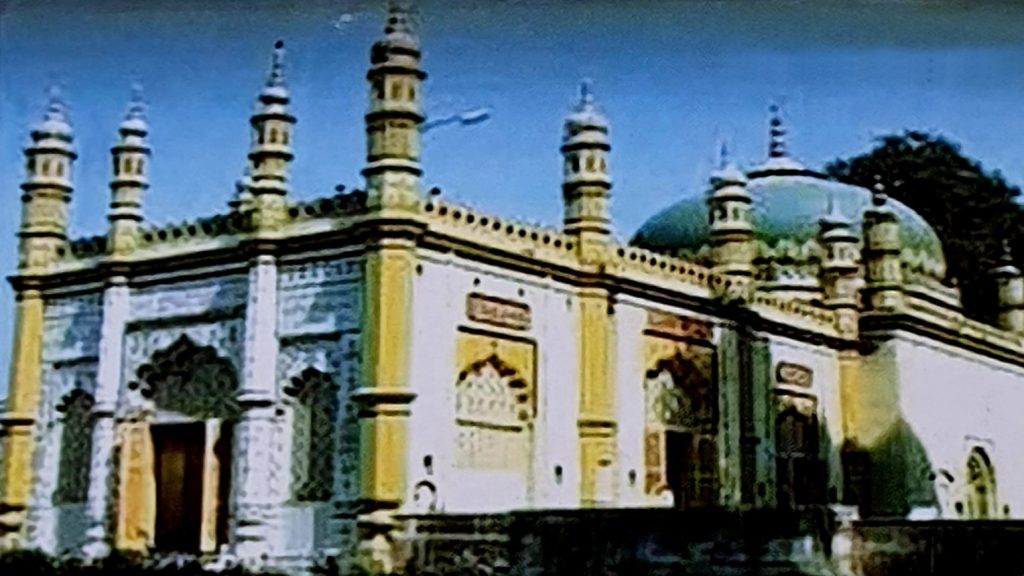
Khanquahmujibia, Phulwari Sharif, Patna: Phulwari Sharif is a major Islamic pilgrimage site located about 7 kilometers from Patna Railway Station. Sufi saints have traditionally flocked to it, particularly Hazrat Pir Muzibullah Quadri in the 18th century. He founded the Khankah Muzibia in Phulwari Sharif, which is known as the Bari Khankah. Since its foundation, the old Madrasa has served as the most important center for teaching Islamic philosophy. Sacred hairs from Paigamber Hazrat Muhammad Saheb’s beard are preserved in Banri Khankah, which draws hordes of his devotees and hosts a large mela every year. At Phulwari Sharif, there is also an archaeologically significant and worth-seeing ancient Sangi Masjid (mosque) constructed of red stones. Humayun, the Mughal Emperor, designed it.
Khanaqah Emadia, Mangal Talab, Patna: During the 19th century, one of the descendants of famed Sufi Saint Hazrat Pir Muzibullah Quadri constructed another Khankah beside a tank named Mangal Talab in the Patna City Chowk region. Khankah Emadia is the name of the Madrasa that is located there. Every year, a Urs is held here, where crowds of devotees gather to pay their respects to their favorite Sufi Saint.
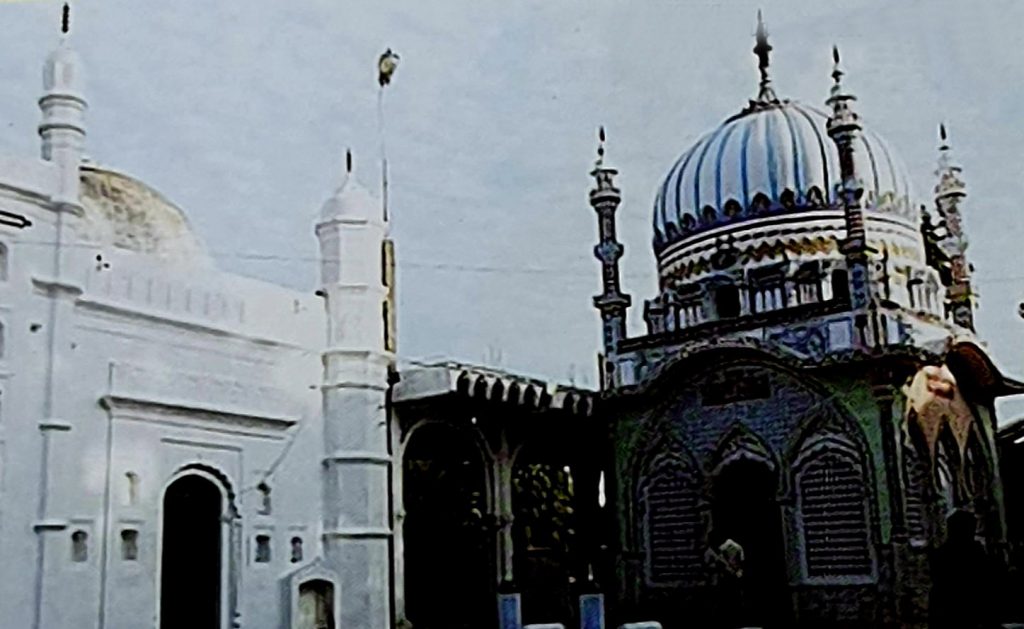
Dargah Sharif, Mithan Ghat, Patna: During the time of Mughal Emperor Aurangzeb, Mughal Prince Azim erected a splendid double-storied mosque on the banks of the Ganges at Mittan Ghat, Patna City, which was previously known as Azimabad. This mosque was built for the Prince’s instructor, Mulla Mittan. During the 18th century, it was from here that the famous Sufi Saint Hazrat Makhdum Munnem preached to his followers. The historic mosque, known as Dargah Sharif, is still standing. An annual Urs Chirag is celebrated here every year after 5 days of “Eid,” when thousands of devotees flock to this Dargah Sharif.
Hajipur Karbala, Vaishali: Shah Alam built it 175 years ago, and it has attracted a great number of Muslims over the years.
Hasanpura, Siwan: This settlement, located about 21 kilometers south of Siwan on the Dhanai River, is said to have been created by Makhdum Saiyed Hasan Chisti, an Arabian saint who came to India and resided here. In addition, he established a Khankah (religious institution) in this town. Both Hindus and Muslims visit the village’s ruins, which include a big mosque and the Saint’s tomb. To the west of the village, there is a huge open court where the grave is located. A viciously processed basalt figure of Vishnu stands in front of it. It is said that the holy Makdum transformed an inauspicious devil into stone, and it should not be raised or set erect.
Bibi Kamal Sahibs, Kako, Jehanabad: The village is the administrative center of the same-named block and is located about 10 kilometers east of Jehanabad railway station on the Jehanabad-Bihar Sharif route. Ram Chandra’s stepmother, Rani Kaikeyi of Ayodhya, lived here for a time, according to mythology, and the settlement was named after her. A mausoleum of Hazrat Bibi Kamal Sahiba, a prominent Muslim lady saint, may also be seen in the area. This lady was supposed to be Hazrat Makhdum Saheb of Bihar Sharif’s aunt and to have divine powers.
Baddi Dargah, Bihar Sharif, Nalanda: Bihar Sharif is the name given to this town because of the numerous Muslim tombs that still bear witness to its importance as a Muslim pilgrimage site. Pir Pahari, a hill to the northwest of the town, is roughly one meter high. The Dargah, or mausoleum, of Saint Mallik Ibrahim Bayu, sits atop the mountain, surrounded by ten lesser tombs. It’s a brick edifice with a dome on top, with inscriptions indicating that the saint died in 1353. Mokhdum Shah Sharif-ud-din, also known as Makhdum-ul-Mulk, died here in 1379 and has a beautiful dargah. His tomb was built in 1569, according to the plaque above the door. The local Mohammedans revere this mausoleum, which stands on the river’s southern bank, and gather here on the 5th day of Sawan to commemorate his death. Badruddin Badr-I-Alam, a great saint who died here in 1440, is commemorated in the Chhoti Dargah.
Chhoti Dargah, Bihar Sharif, Nalanda: Hazrat Sultan Ahmed Charampose Dargah, Makhdum, Bihar Sharif (Nalanda). Tomb of Hazarat Makhdum Sultan Saiyad Shah Ahmed Charampose Teg Barhana Rohmatulla Alaib is the largest and oldest building in Mohalla-Amber in Bihar Sharif Town (Nalanda). In the year 1236, he was born, and in the year 1335, he died (according to Islamic calendar 657-776 Hizri). Among other Sufi saints and Auliahs, he is held in great regard. Every year, tens of thousands of people attend the Urs’, which is held in honor of the Saint.
Jain Tour
In Bihar, Jainism, a famous Indian religion, flourished. As the birthplace of the 12th Tirthankara Vasupujya and the 24th Tirthankara Mahavira, this is a revered site. Mahavira spent most of his life in this region and gained Mahaparinirvana at Pawapuri, which is considered the holiest destination for any Jain believer. Champapur is widely venerated as the birthplace of Vasupujya Swami, the 12th Tirthankara.
Kamaldah, Patna: Two Jain temples remain on a high mound of brick ruins in the Kamaldah area of Gulzarbagh, Patna. The mausoleum of Jain saint Sthoolhdbhadra and the Sudarshan Swami shrine are both located here.
Kund Gram, Muzaffarpur: The 24th Tirthankar, Lord Mahavira, was born in Kundagrama and lived in Vaniyagrama, according to Jain scriptures. Both of these locations were in or close to Vaishali. Ancient Vaniagrama is located near the present settlement of Bania, while Kund Gram is located about 2 kilometres northeast of the gadh mound in the modern village of Vasokund.
Kundalpur, Nalanda: Kundalpur is home to a stunning Jaisalmer stone temple among the ruins of medieval Nalanda University. The statues of Lord Mahavira, Adinath Swami, and Gautam Gandharva can be found here. Gautam Gandharva, Lord Mahavira’s first disciple, is said to have been born here. There’s also an ancient Jain temple nearby
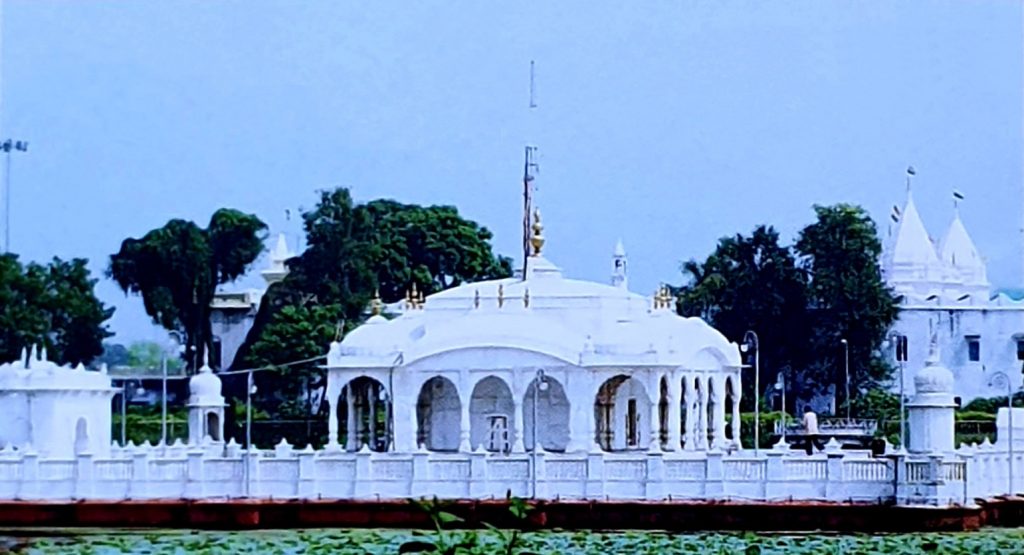
Jalmandir, Pawapuri: Apapapuri, which means “sinless town,” is a sacred Jain pilgrimage site. Lord Mahavira, the foremost proponent of Jainism, is said to have gained Nirvana at Pawapuri, according to Jain mythology and tradition. After his cremation here, hundreds of thousands of his students and devotees took away his ashes. The rush was so great that the area’s soils were removed and it was turned into a tank. Later, a beautiful white marble temple known as Jalmandir was built in the center of the tank to honor the Lord’s Nirvana.
Samosaran: This lovely shrine is dedicated to the spot where Lord Mahavira sat to educate his students. The temple is made of white marble and rises in numerous concentric terraces, with a beehive-shaped shrine at the top housing Lord Mahavira’s footprints.
Maniyar Math: This monument is located near the middle of the historic inner-city enclosure, on the approach to the Son Bhandar Caves. According to legend, Srenika or Bimbisara had 32 wives to whom he gave new ornaments every day and tossed the old ones into a well that still exists. A modern modest Jain temple can be found here.
Sone Bhandar: On the southern slope of the Vaibhara hill, facing the western side of the valley, two rock-cut caves, close to each other, have been dug. The western one is known as Son-Bhandar in the area (Gold Treasury). The piece of granite within this gap, according to local legend, is an ancient wedge obstructing the path to the gold treasury in the hill’s body. It consists of a rock-cut chamber with a fallen front section. There are six tiny Jain Tirthankaras sculpted in relief inside the cave’s southern wall, depicting Padmaprabha, Parshvanatha, and Mahavira.
Gonava Jee, Nawada: On the Patna-Ranchi route, Gonava hamlet is about one kilometre north of Nawada. This is a pilgrimage destination for both divisions of the Jains. The Digambar Jain temple is located alongside the main road, while the Shwetambar Jain temple is located behind it. Lord Mahavira’s first student, Gautam Gandharva, attained Nirvana at the temple.
Lachhuar, Jamui: This pilgrimage site, located about 8 kilometers west of Simaria and 7 kilometers south of Sikandra, features a significant number of Jain temples and a Dharamshala erected in 1874 by Rai Dhanpat Singh Bahadur of Murshidabad for the convenience of Jain pilgrims visiting some of the nearby hills. Muth Boodhroop and Muth Purusnath are the closest, about 5 kilometers from Lachhuar.
There are little statues of Mahavira dating back to Samvat 1505 in two small shrines located in the valley between two parallel ranges of hills, while the other statues are older. Some Jains believe Mahavir Swami was born in Lachhuar.
Bisram, Bhojpur: Arrah, a neighborhood in the town, is home to 45 Jain temples. Lord Mahavira, the 24th Jain Tirthankara, rested here for a while during his wanderings, thus the name Bisram (rest). Jains from all over the country visit Bisram throughout the year, where there is a Jain temple with an idol of Lord Mahavira.
Masadh, Bhojpur: This settlement is around 9 kilometers southwest of Arrah. According to archaeological records, an old Jain temple dedicated to Parshwanath with eight images dates back to 1396 A.D. In the year 1819 A.D., the temple was completed.
Mandar Hill, Banka: The Mandar hill, roughly 700 feet high and located 48 kilometers south of Bhagalpur, is made up of a massive lump of granite that has been covered with low jungle near the summit. Mandar or Sumeru is linked in the Skand Purana to the legend of AmritaManthana, or ocean churning. According to legend, the Gods and Demons (Devas and Asuras) employed this Mandara or Sumeru Mountain as the churning staff or rod to obtain amrita (divine liquor), which is supposed to grant immortality when consumed. Vasuki, the giant legendary serpent, served as the rope. Because of this fabled connection, the hill has taken on religious significance and is now a pilgrimage site. On the peak of the hill, there are two Jain temples where Jain pilgrims worship Lord Vasupujyanatha.
Champanagar, Bhagalpur: Champanagar, a western suburb of Bhagalpur, is mentioned as one of the places where the last Tirthankara Mahavira stopped during his religious wanderings for three rainy seasons. Jain Tirthankara Vasupriya is said to have been born in Champanagar or Champapuri, according to Jain tradition. There are two large Jain temples, both of which were built totally at the expense of Jagat Seth, a devotee. Another Jain temple containing the footprints or padukas (footwear) of the 24 Jain Tirthankaras may be found in the nearby hamlet of Kabirpur, with an inscription dating from V.S. 1694 or 1637 A.D.
Kundghat: It is around 6 Kilometres from Lachhaur, where the Kundeshwari Devi temple, which is regarded sacred by the Jains, is located.
Fair & Festivals
Bihar is known for its festivities. The main traditions in Bihar are Chhath, Deepawali, Shravani Mela, Teej, Chitragupta Puja, Makar Sankranti, Saraswati Puja, Holi, Eidul-Fitr, Eid-ul-Adha, Muharram, Kali Puja, Ram Navami, Rakshabandhan, Maha Shivaratri, Durga Puja, Lakshmi Puja, Christmas, Maha Jayanti, Buddha Purnima, Guru Parv and Bhai Dooj.
Chatt Puja: The Hindu festival of Chhath is observed in Bihar and eastern Uttar Pradesh. The ‘Sun god’ has been revered by almost all civilizations, but it takes on a special form in Bihar. Chhath Puja is the only time when the rising and setting suns are both worshipped.
Chhath Puja is observed on the sixth day of Kartik month, according to the Hindu calendar. Surya Shashti, or Chhath Puja, is a bathing festival that is followed by a four-day period of abstinence and ceremonial purity.
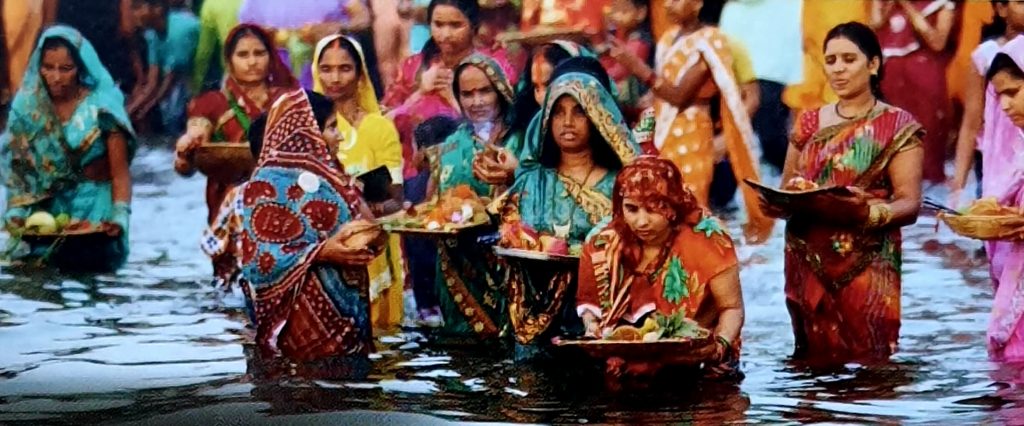
Chhath Puja is a four-day observance that is both severe and spiritual. Taking a dip in the holy river/any water body is a part of the Chhath Puja on the first day. People also bring Ganges water home to perform specific ceremonies and offerings. On this day, houses are properly cleaned. Devotees observe a day-long fast on the second day of Chhath, also known as Kharna, which is broken in the late evening after performing Mother Earth worship. Rice pudding (kheer) and fruits are among the offerings to the God, which are dispersed among family members and friends. The preparation of prasad (offerings) for the evening is also known as Sanjhiya Arghya, takes place on the third day of Chhath.
Thousands of devotees congregate on the banks of rivers in the evening to give offerings (Arghya) to the setting sun. Folk songs depicting Bihar’s culture and history are performed. On the third day’s night, a colourful festival known as Kosi takes place. Sugarcane sticks are used to create a canopy, which is then filled with lighted earthen lamps and prasad baskets. Family members and friends gather on the banks of rivers before daybreak on the fourth and final day of Chhath to make offerings (Arghya) to the rising sun. Devotees break their fast after this rite and distribute Prasad to their friends, family, and relatives.
Sonepur Mela: The Sonepur Fair, which takes place every year, is a genuine rural fair that combines spirituality with elephants, cattle, and horse-trading. It begins on the auspicious Hindu holy day of Kartik Purnima when pilgrims bathe in the river early in the morning and last around three weeks. A carnival-like atmosphere is created by street magicians, spiritual gurus, snack booths, handicrafts, amusement rides, circus acts, and theatre. The Fair also recalls Lord Vishnu’s intervention in Hindu legend to remove a severe curse and long battle between elephant and crocodile. According to legend, a bathing elephant was attacked by a crocodile and saved by Lord Vishnu. The fair is recognized as a livestock fair in the past.
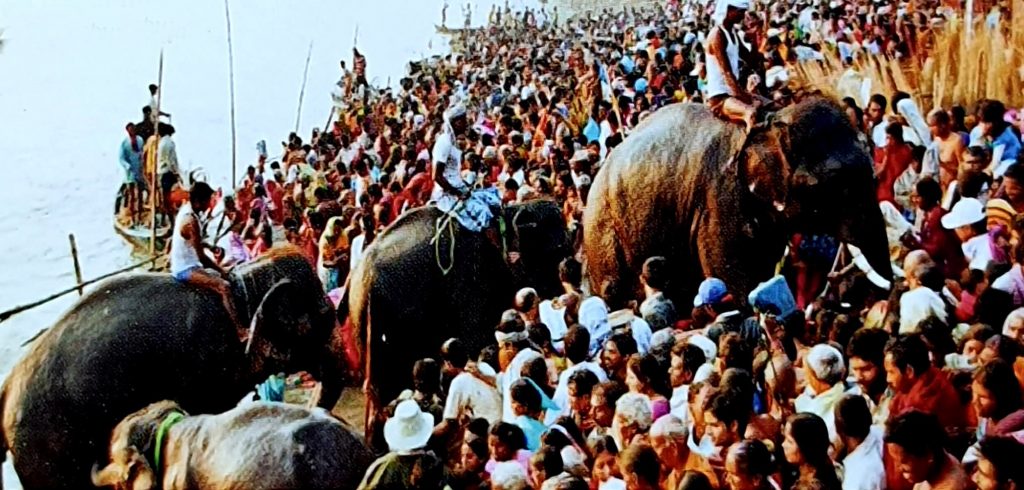
Sonepur Mela
Rajgir Mahotsav: Every year in the last week of October, the Rajgir Mahotsav, a three-day dance festival, is held in Rajgir, the historic capital of the Magadha Kings. The Department of Tourism, Government of Bihar, is hosting the event. The dance festival is jam-packed with action, featuring devotional music, operas, various types of folk dances, classical dances, and ballets, all of which contribute to a festive mood. The festival attracts musicians from all over the country.
Sama-Chakeva: Birds from the Himalayas travel to the lowlands during the winter. The celebration of sama-chakeva begins with the entrance of these colorful birds. This is an event that is particularly popular in Mithila. This event is dedicated to the celebration of the brother-sister relationship in Mithilanchal. It depicts both the culture of this land and the art of idol-making. The event begins with the arrival of the sama-chakeva pair of birds. Girls carve clay figurines of various birds and decorate them according to their particular traditions. Various ceremonies are conducted, and the festival concludes cheerfully with Sama’s ‘vidai’ and a request that these birds return to this country the following year.
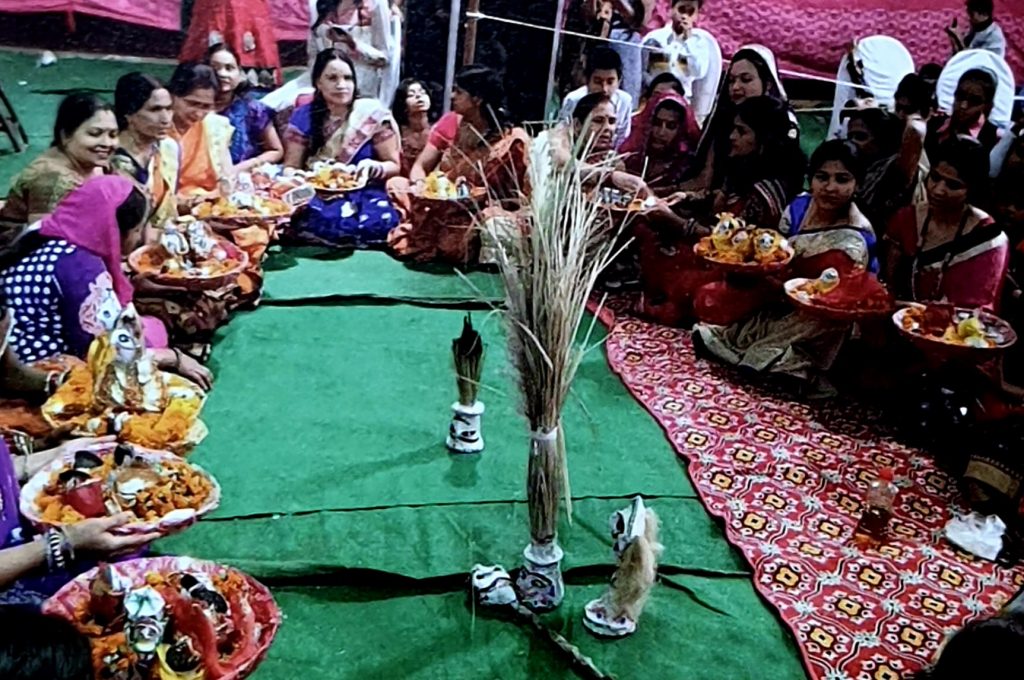
Sam Chakeva Festival
Pitrapaksha: Every year in September, Pitrapaksha, a fortnight-long festival of souls, is held in Gaya, where Hindus from all over the world go to venerate their ancestors. Vishnupad Mandir, Ramshila, Pretshila, Akshayawat, and Baitami are just a few of the 48 Vedis or altars that can be seen around the town. At these sites, pilgrims undertake the ‘Pindadaan’ ritual in honor of the departed souls. Tarpan is a mixture of water, sesame seeds, and Kushaa (a type of sharp-bladed grass) that is dedicated to the deities, and ancestors as “Pindadaan” at Gaya.
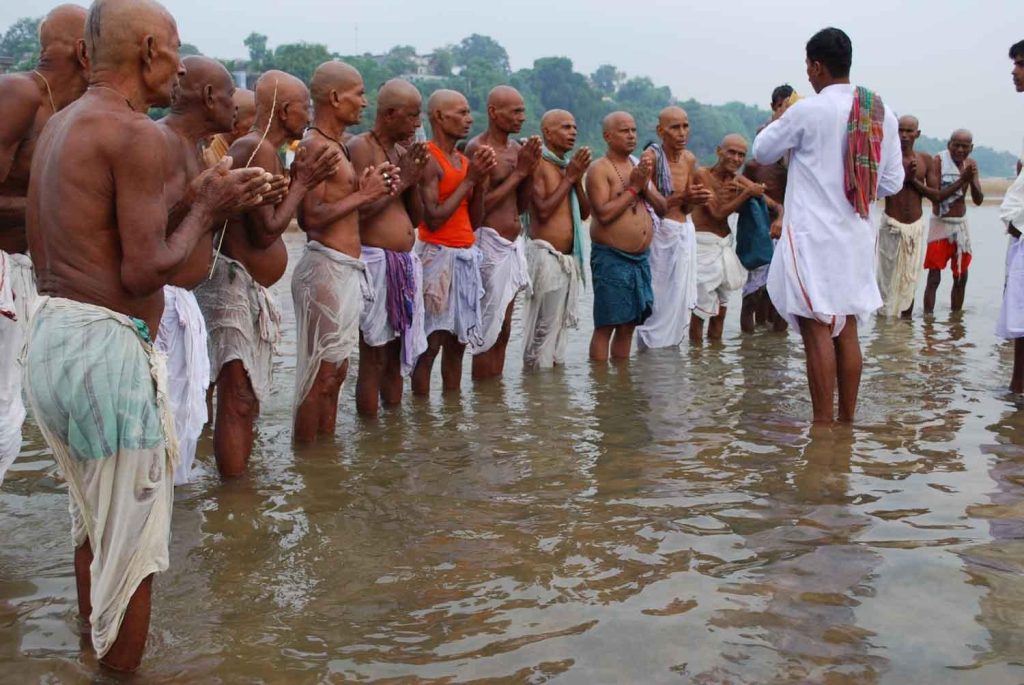
Pinda Daan
Makar Sankranti: The celebration, also known as Tila Sankranti, heralds the start of the summer season. People believe that from today, the days will become longer and the sun’s heat will increase. Every year on January 14th, it is commemorated. Makar Sankranti is observed in Rajgir in the month of Paus, which corresponds to January in the Gregorian calendar. Devotees bathe in the sacred water and give flower gifts to the deities in temples at hot springs. The festival is celebrated with pomp and circumstance at Mandar hill in Banka district, and a large fair is also held there. According to legend, Lord Krishna’s famed Panchjanya’ Sankh was discovered here. Around the hill, traces akin to serpent coils may be discovered, and it is thought that the snake god offered himself as a rope for churning the ocean to collect the nectar. It is commemorated by giving alms to the poor.
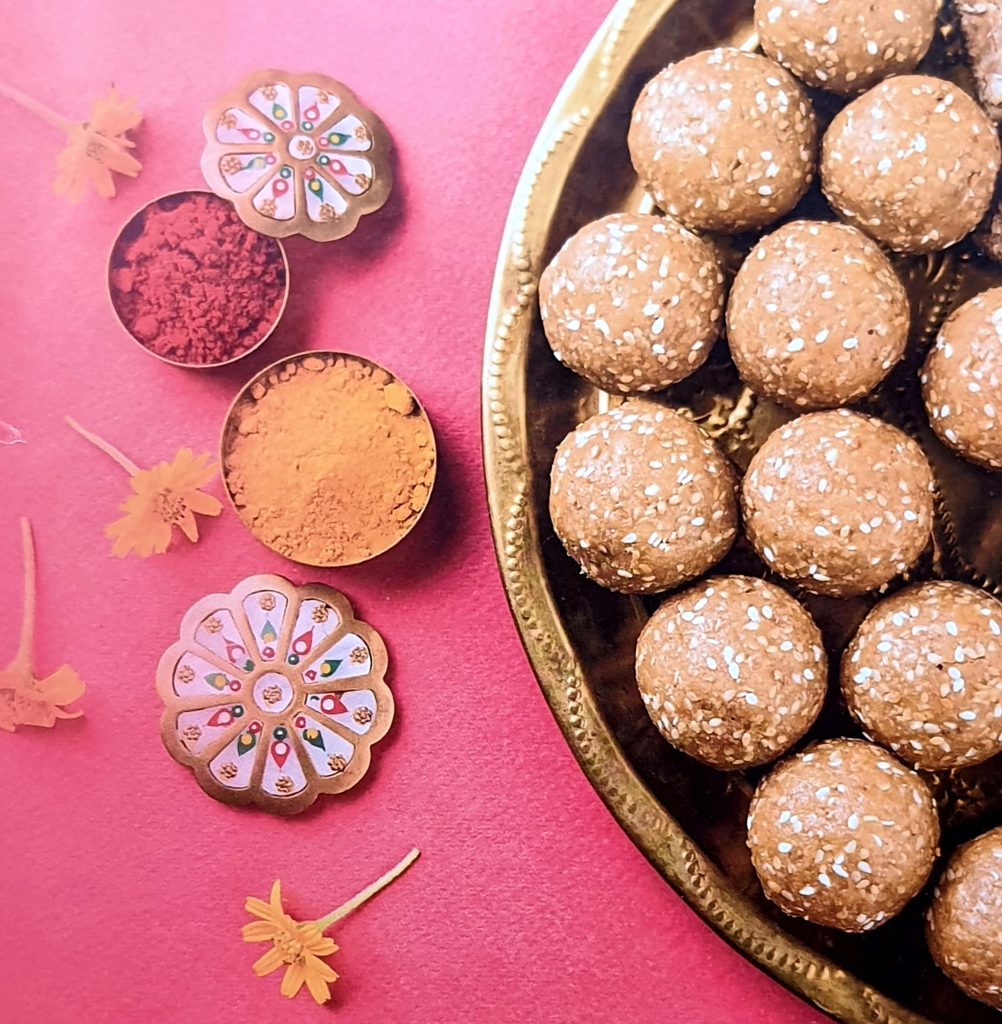
Makar Sankranti Festival
Bihula: Bihula is a well-known carnival in eastern Bihar, particularly in the Bhagalpur district. There are many stories surrounding this celebration. People pray to the goddess Mansa for their families well-being. The event promotes the excellent Manjusha Art, which is on par with other Bihar folk arts such as Santhal Parganas’ Jadopetiya and Mithilanchal’s Madhubani paintings. The overall purpose of Bihula or Bishahri is to please the Goddess Bishahri so that she can save humanity from serpent’s fury. They include character drawings and hence provide a vivid depiction of the complete mythology surrounding Bishahri puja.
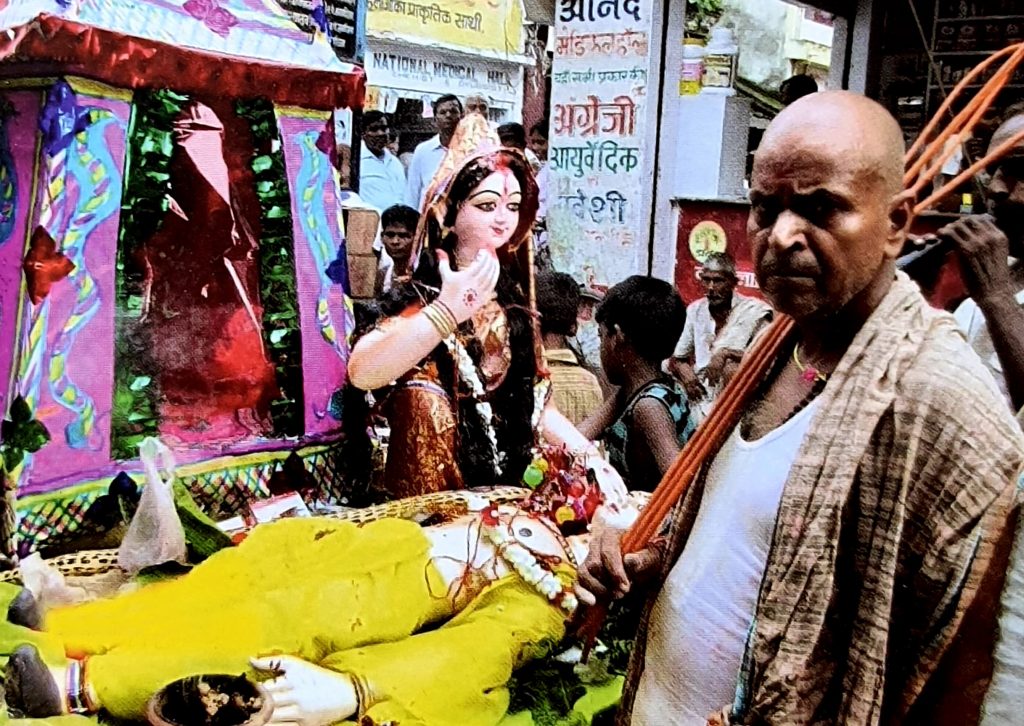
Bihula Festival
Madhu Shravani: This festival is enthusiastically celebrated across Mithilanchal. It takes place in the month of Sawan (Hindu calendar). The arrival of the monsoon season is symbolized by Madhushravani Puja. Married women are the ones who observe it. Women worship Naga devatas (Serpent Gods), Gauri, Shanti Kalash, Surya, Chandrama, Navagrah, and various Nags, including Nag dampati, Bairasi with hundred brothers, Chanai, Kusumawati, Pingla, Lili, Gosauni nag with seven sisters, and Shasthi or Sathi.
Newly married girls stay at their parent’s house for the Madhushrava Tritiya festival since being with parents during Shravan, or at least during this festival, is considered vital. The Groom’s family sends the Bride’s family gifts (Bhar). The bride is supposed to eat only foods sent from her husband’s home, according to tradition. While eating Madhushn, the bride is accompanied by at least five married women.
Muslim Festivals: In Bihar, Muslim festivals are observed with equal glitz and glamour, and all communities take an equal interest in these festive rituals. Muharram, the two Eids, and Shab-e-Barat are the most prominent Muslim festivals in Bihar.
Jivitputrika Vrat: On the eighth day of the waning phase (Ashtami of Krishna Paksha) of the Ashwin Month, Jivitputrika Vrat, also known as Jiwit Putra or Jitiya fasting, is observed. Jitiya Fast is observed by mothers for the well-being of their sons. Mothers begin their fast after an early morning wash and prayers, and they do not eat or drink anything for the rest of the day. The Vrat traditions differ from place to place, but the objective remains the same.
Teej: Teej is a very auspicious festival that married ladies celebrate to keep their husbands healthy and to have a happy married life.
Culture & Crafts
Madhubani Painting: This style of painting, also known as Mithila painting, is unique to Bihar and the Terai region of Nepal. A colored paste made from rice powder was used to create this painting. It’s thought to have begun during the Ramayana when King Janak commissioned artists to create paintings for his daughter Sita’s marriage to Ram. This artwork was originally created on a freshly plastered wall, but it is now also created on clothes and canvases.
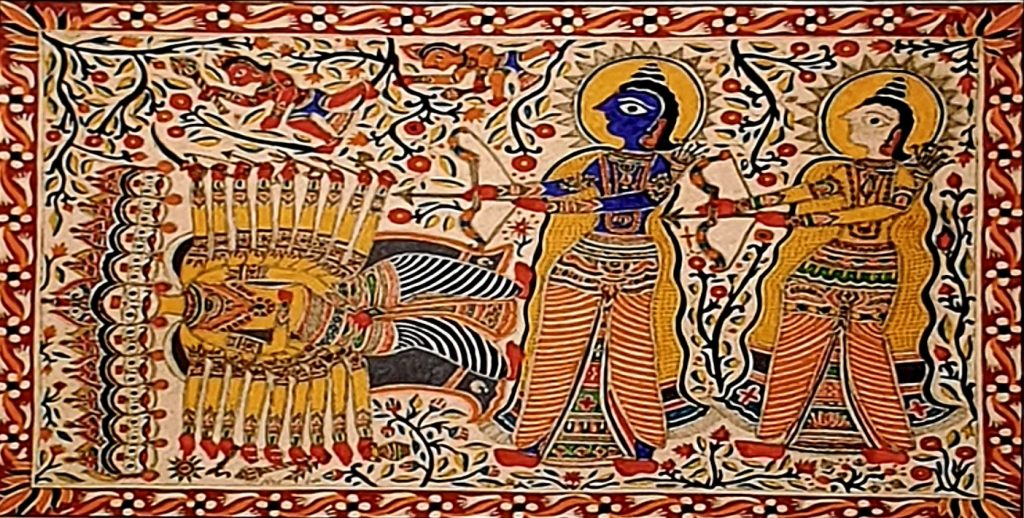
Madhubani Painting
Paper Match Art: Paper match art, a distinctive craft of Bihar, India, exemplifies the region’s rich cultural heritage and artistic ingenuity. This folk art, also known as “Gudiya Shilp” or “Matchstick Art,” involves creating intricate designs and figures using simple matchsticks. The matchsticks are meticulously cut, colored, and arranged on paper or other surfaces to form detailed patterns and scenes, ranging from traditional motifs to contemporary images.
The origins of Paper Match art in Bihar are rooted in the state’s longstanding tradition of craftsmanship and creativity. Artisans skillfully manipulate matchsticks to produce visually captivating works that reflect the vibrant cultural ethos of the region. These artworks often depict local flora and fauna, religious symbols, and everyday life scenes, capturing the essence of Bihar’s societal and spiritual dimensions.
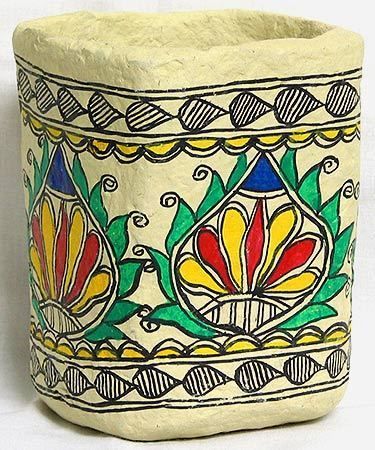
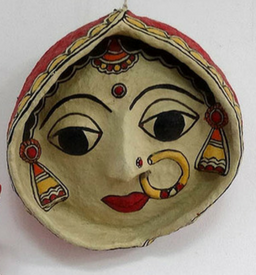
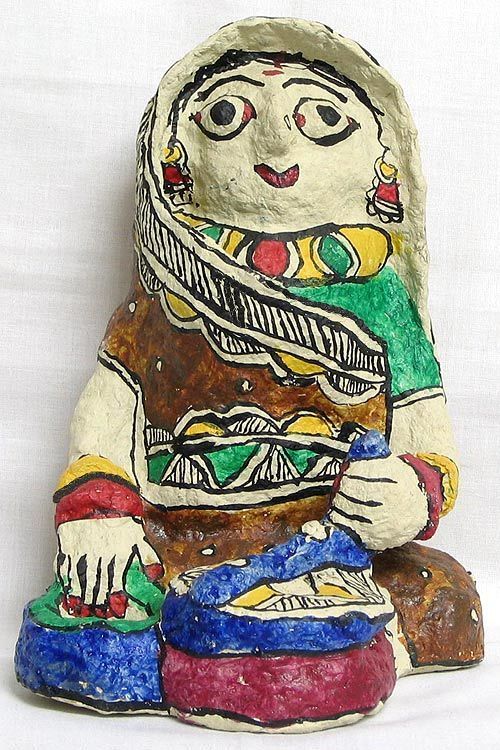
Crafts: Bihari households have bamboo baskets, cups, and saucers decorated with vibrant colors. When the bride leaves for her in-laws after the wedding, she is given a special container called pauti, which is braided out of Sikki grass. Cotton duvets and drapes are also plentiful. Bhagalpur is noted for its sericulture, which produces a significant amount of tusser silk.
Folk Dance: Bihar is home to a diverse range of folk dances, which are reflected in the state’s rich cultural heritage and ethnic identity. Sohrai nach, dhobi nach, manjhi, jhumar nach, gond nach, jitiya nach, dom-domin, bhuiababa, kathghorwa nach, rah baba, Jat jatin, bamar nach, jharni, jhijhia, launda nach, natua nach, bidapad nach, and Gond nach are some prominent folk dance.
Folk Songs: Bihar has a long legacy of folk songs, which are sung on significant events such as weddings, birth rituals, festivals, and so on. Musical instruments such as the dholak, bansuri, tabla, and harmonium are commonly used to accompany these folk melodies. Bihar is also known for its colorful Holi songs, known as Phagua’, which have catchy beats. The divine Chhath songs are also immensely popular in the state and across the country.
Literature: Bihar is known for its literature, both ancient and modern. Mahamahopadhyaya Pandit Ram Avatar Sharma, R. K. Sinha, Raja Radhika Raman Singh, Dr. Bhagwati Sharan Mishra, Shiva Pujan Sahay, Ramdhari Singh ‘Dinkar,’ Divakar Prasad Vidyarthy, Ram Briksh Benipuri, Fanishwar Nath Renu, and many others were born in the state.
Khatwa: In Bihar, appliqué works are known as Khatwa. Khatwa is made by cutting one cloth into pieces and sewing them together with another fabric. Khatwa is mostly used to make designer tents, canopies, and shamianas, among other things. Both men and women contribute to the construction of such tents. While males are in charge of cutting the garments, women are in charge of the stitching. Khatwa is often employed in the design of women’s clothing.
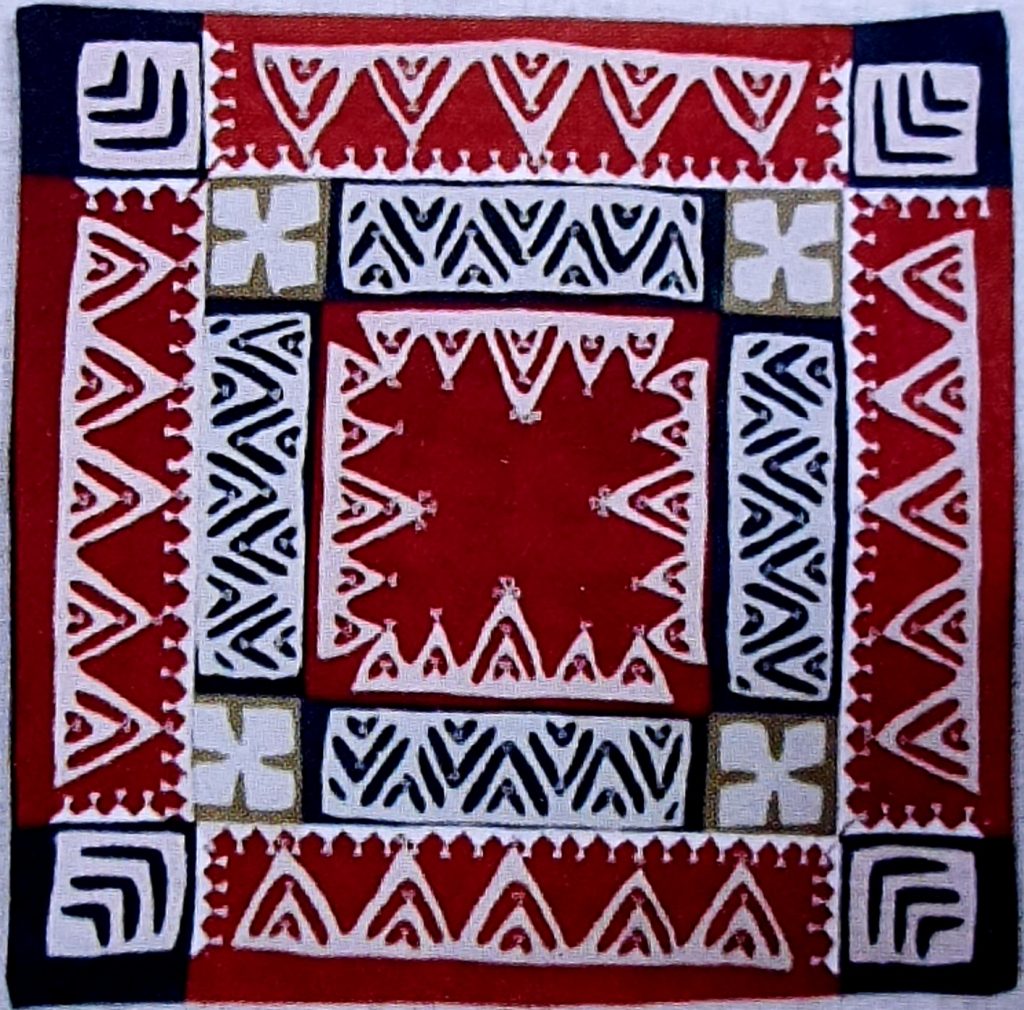
Khatwa
Sikki Art: The sikki grass artifacts created by the ladies of north Bihar are unlike anything seen in the rest of the country. Sikki is a plant that grows naturally along riverbanks or along rural roadsides, as its name suggests. This plant may also grow in humid environments.
Bhagalpur Silk: Bhagalpur is renowned as Silk City because of its silk production, which is famous all over the world. This silk is a one-of-a-kind creation. Tussah or Tussar Silk is the name given to it. Silk weaving is a centuries-old Bhagalpur domestic enterprise.
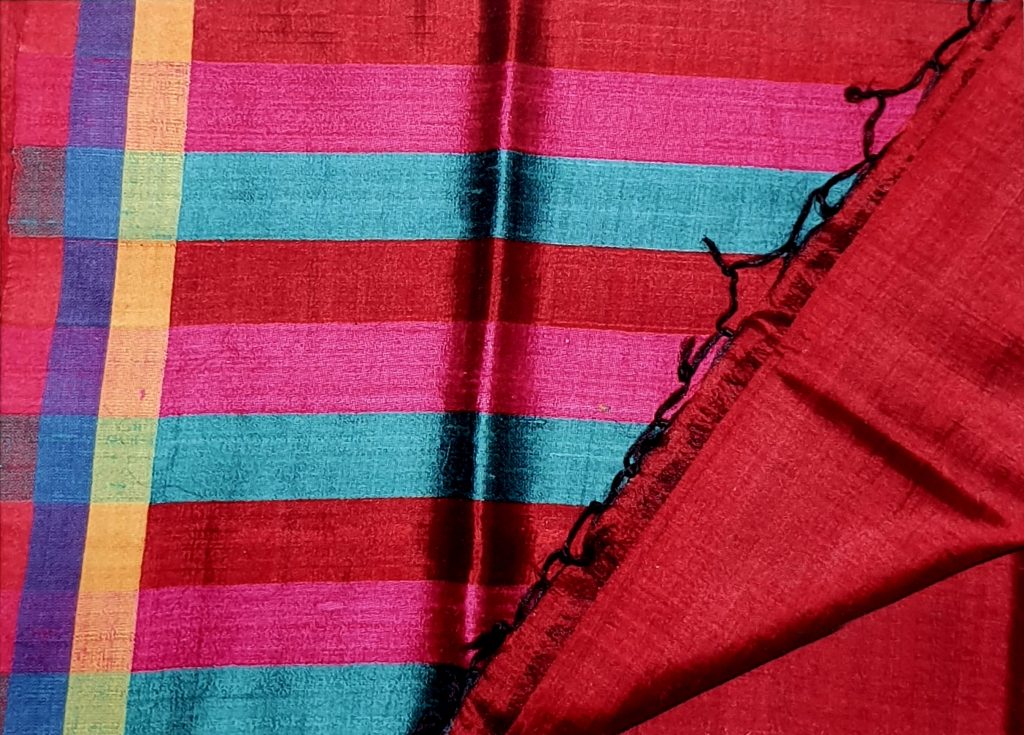
Bhagalpur Silk

